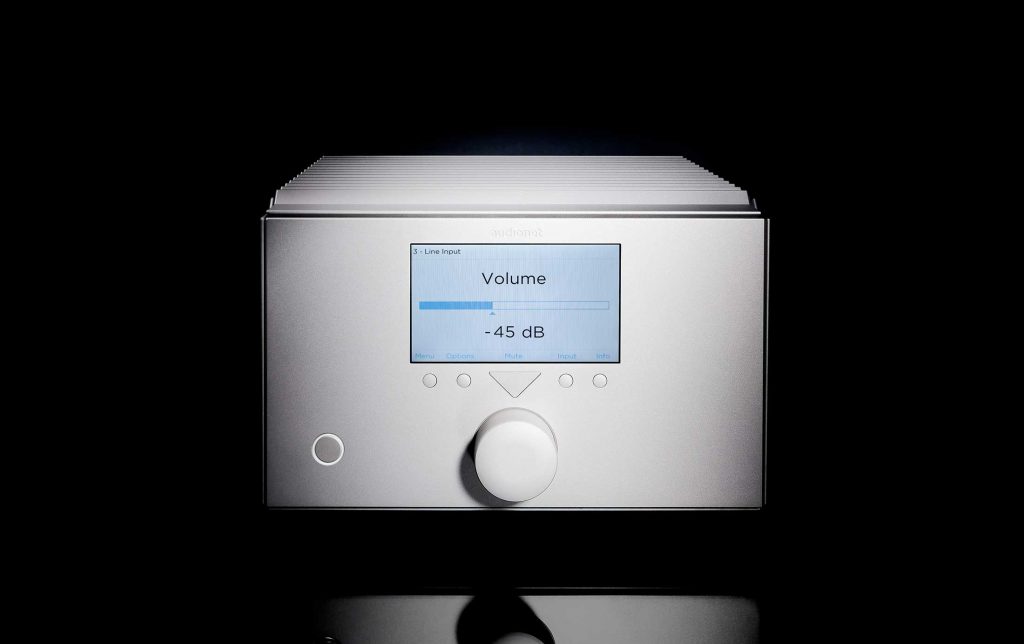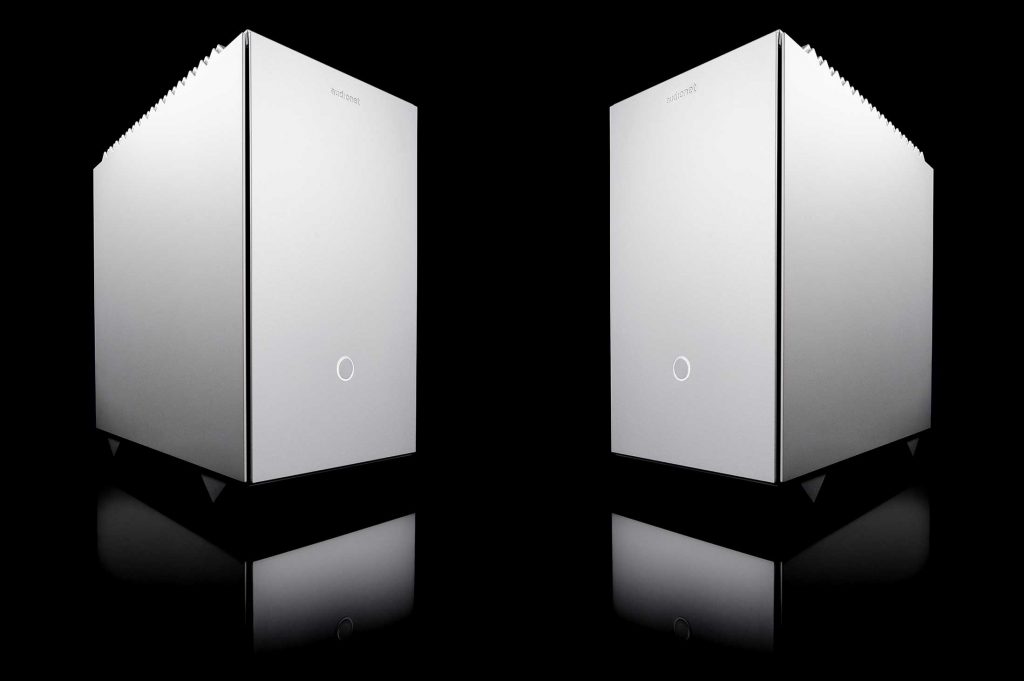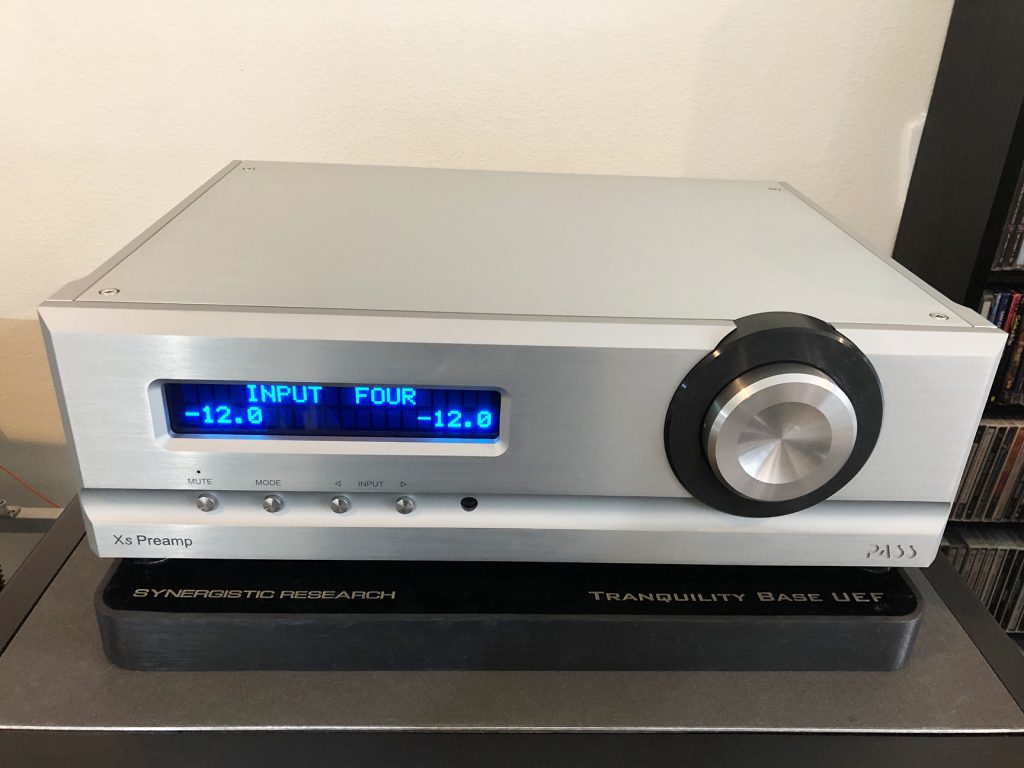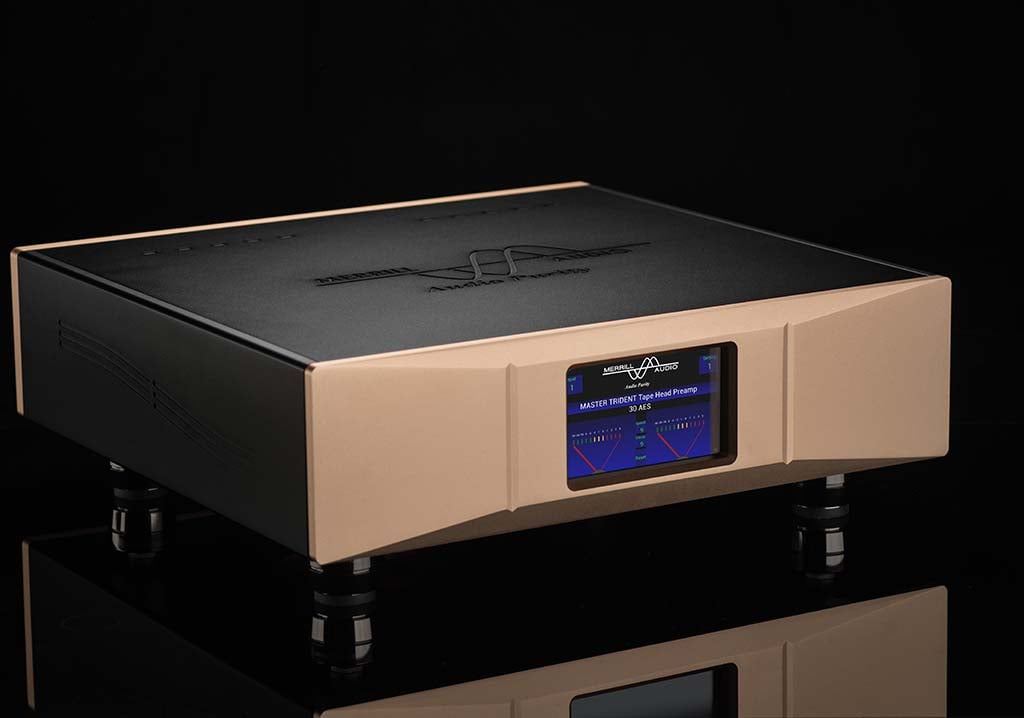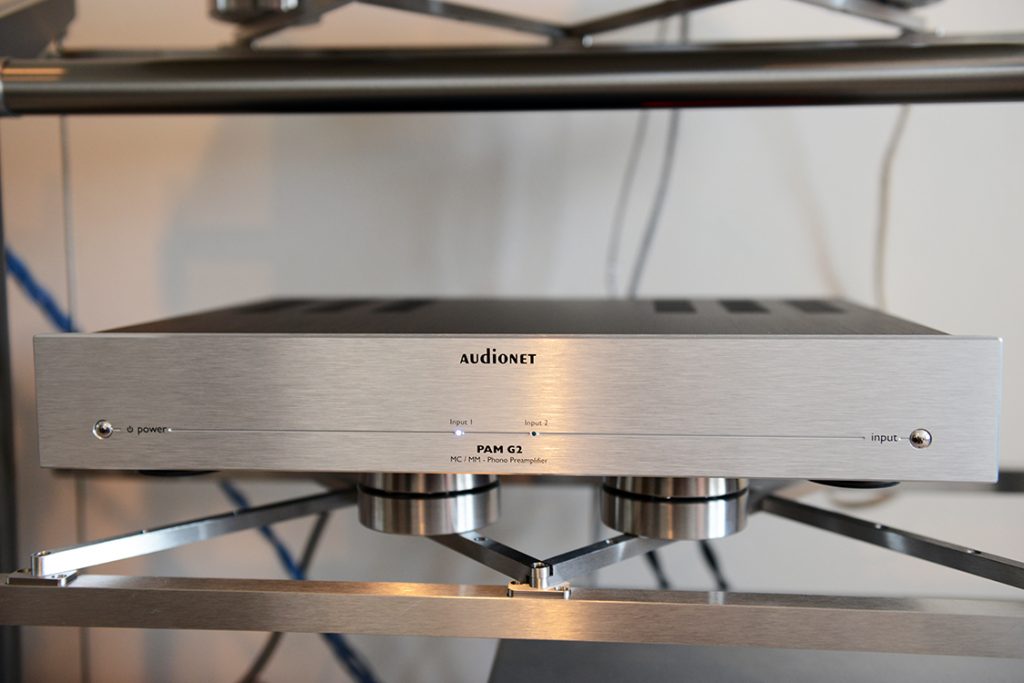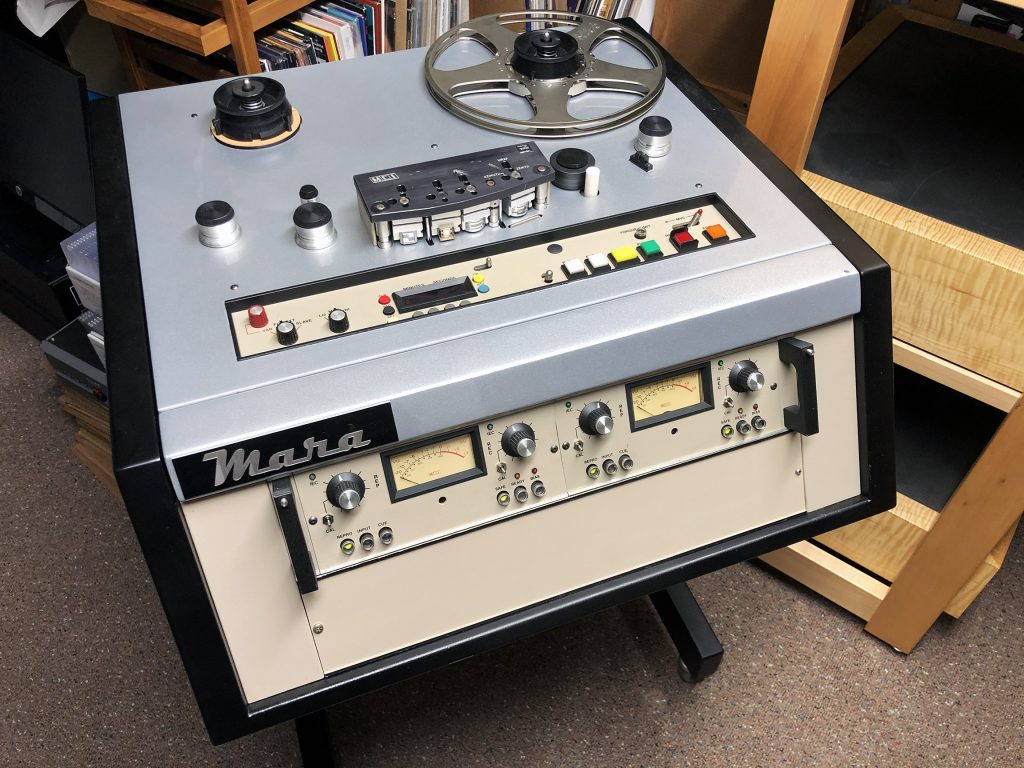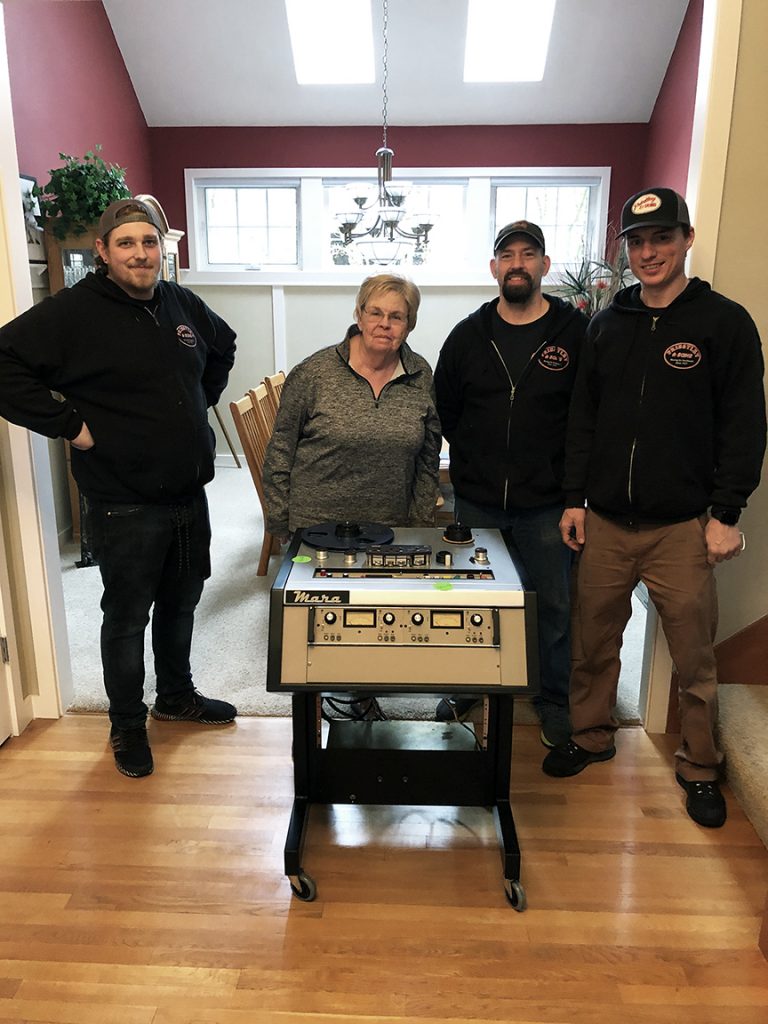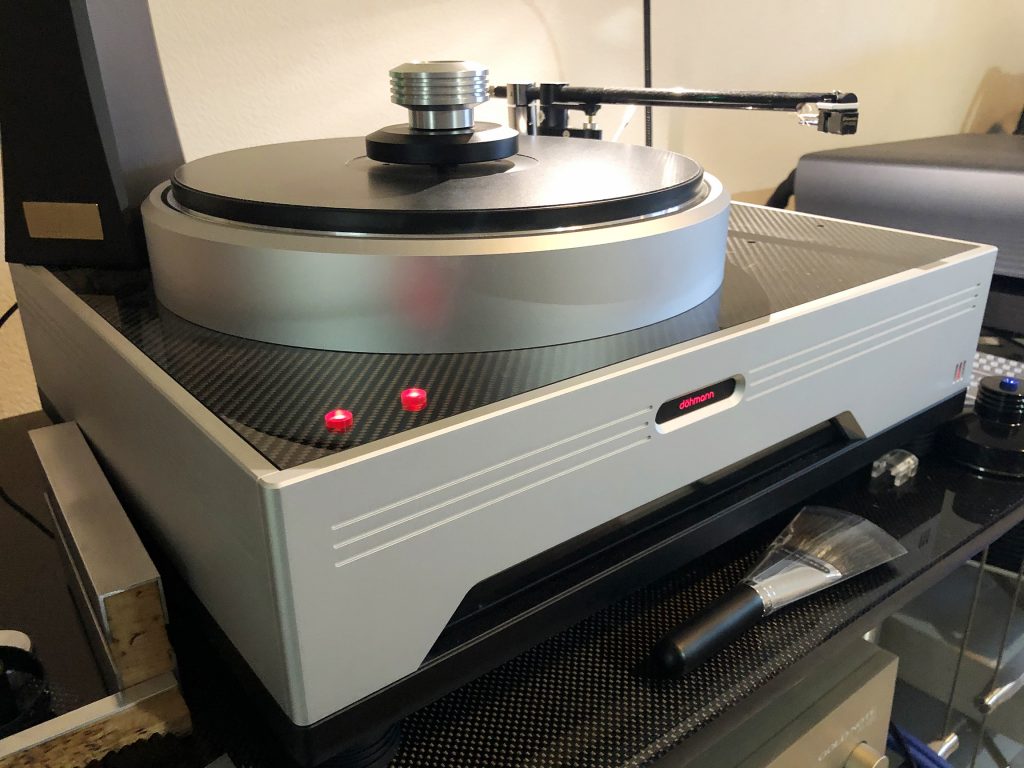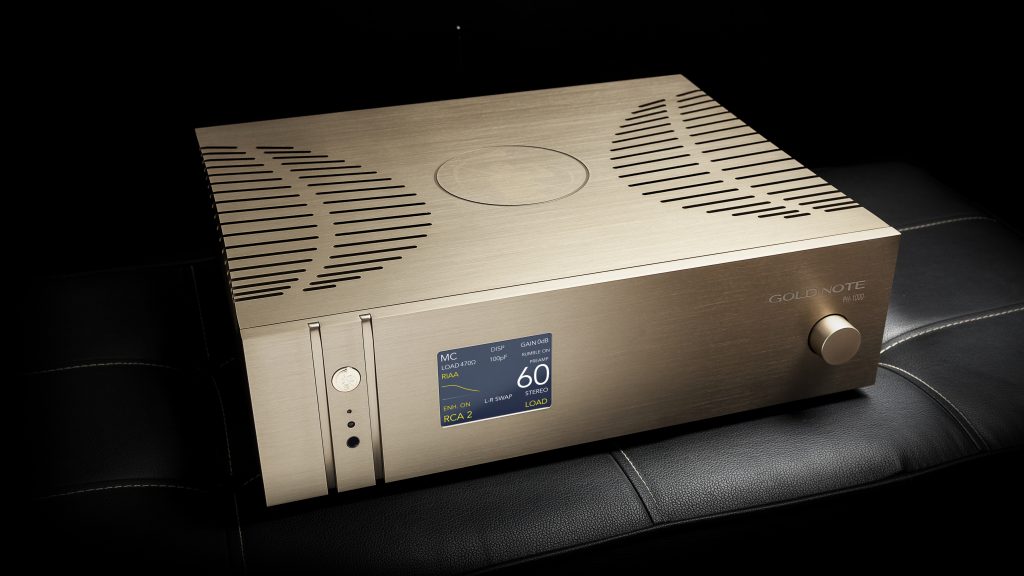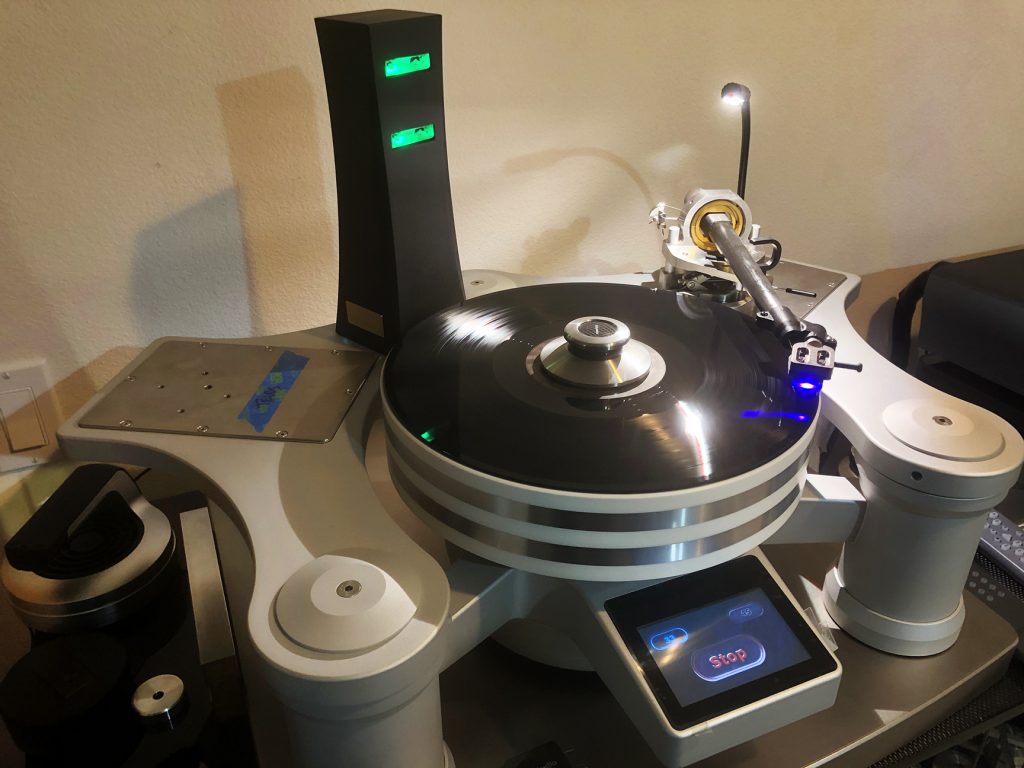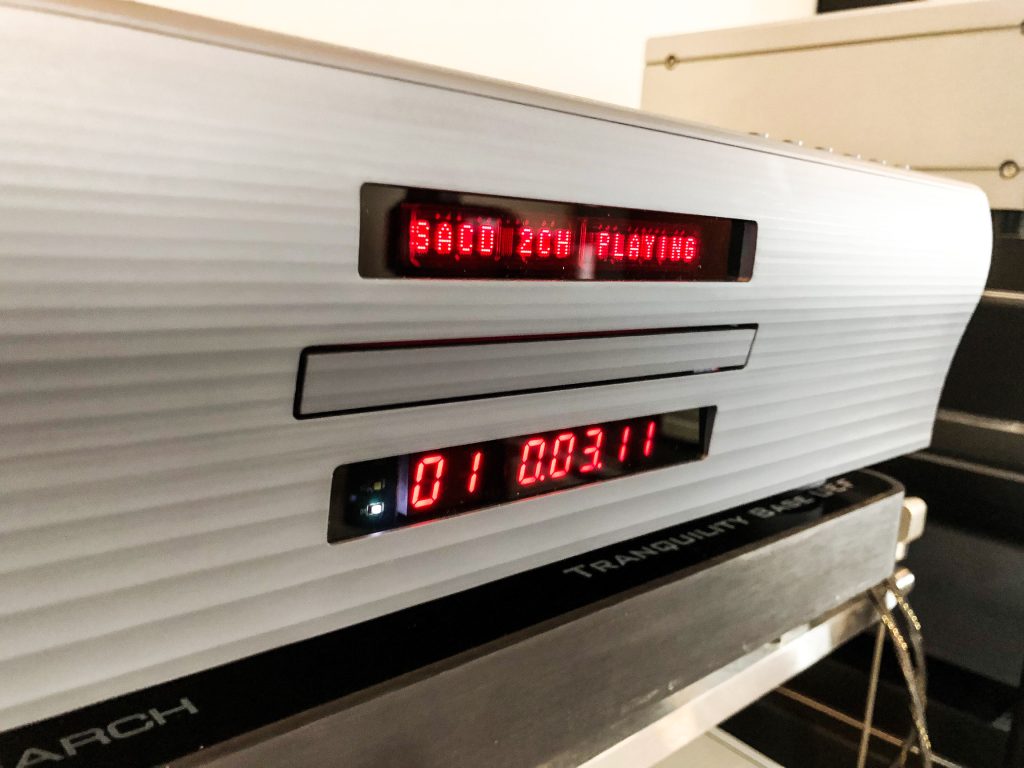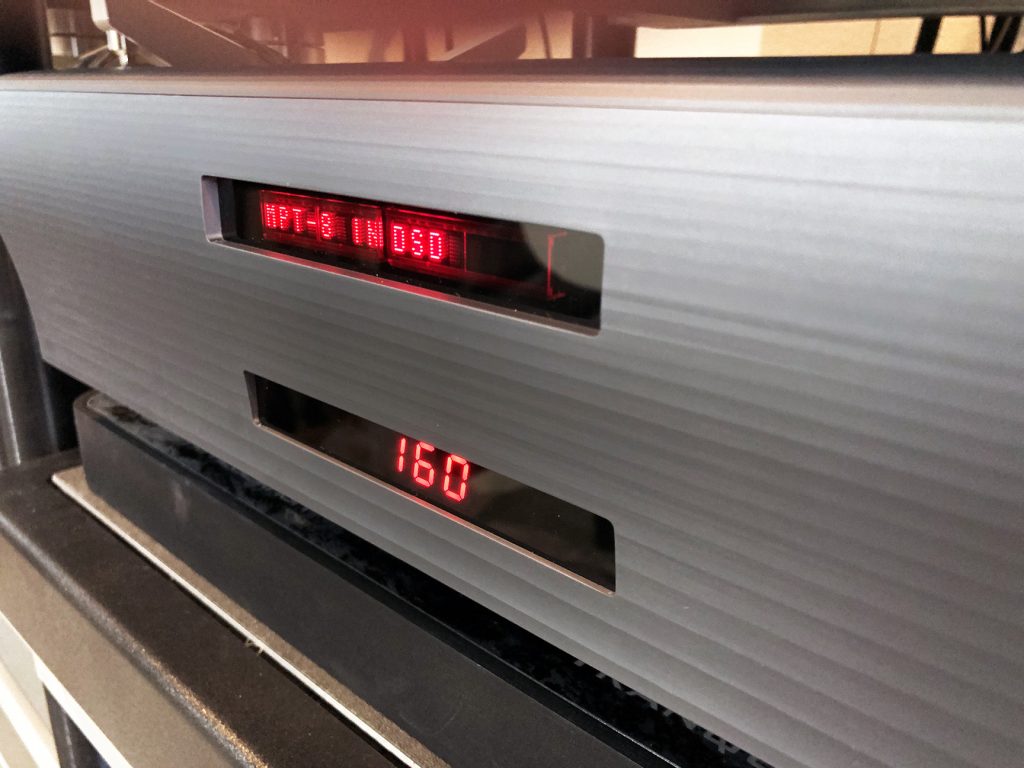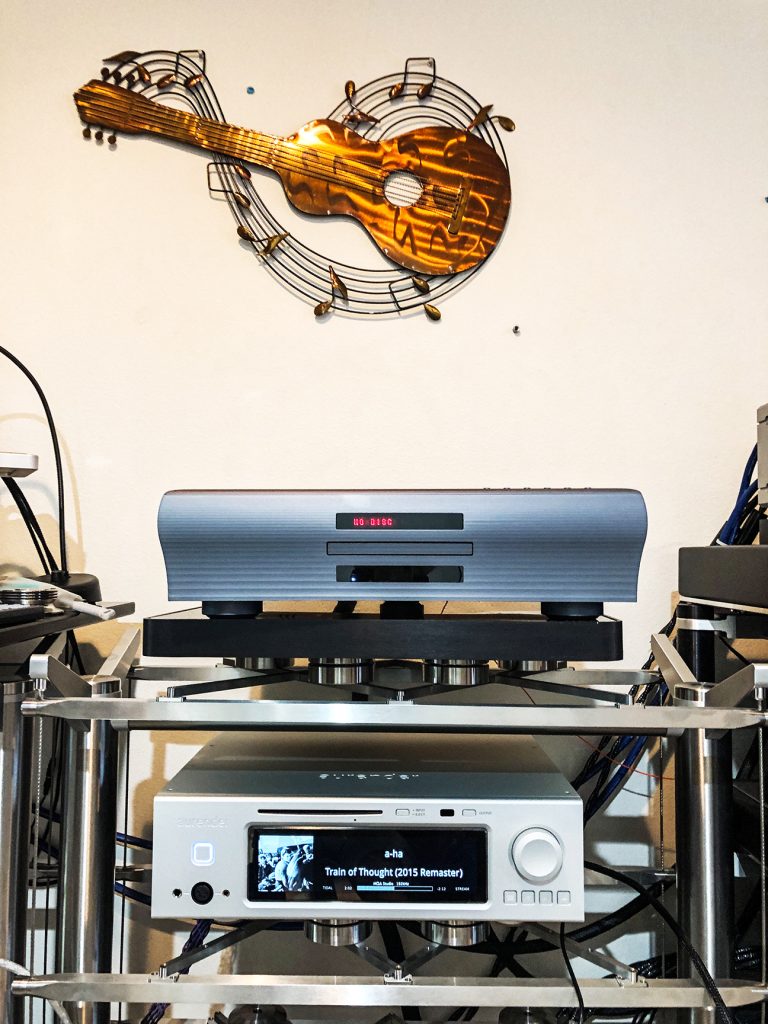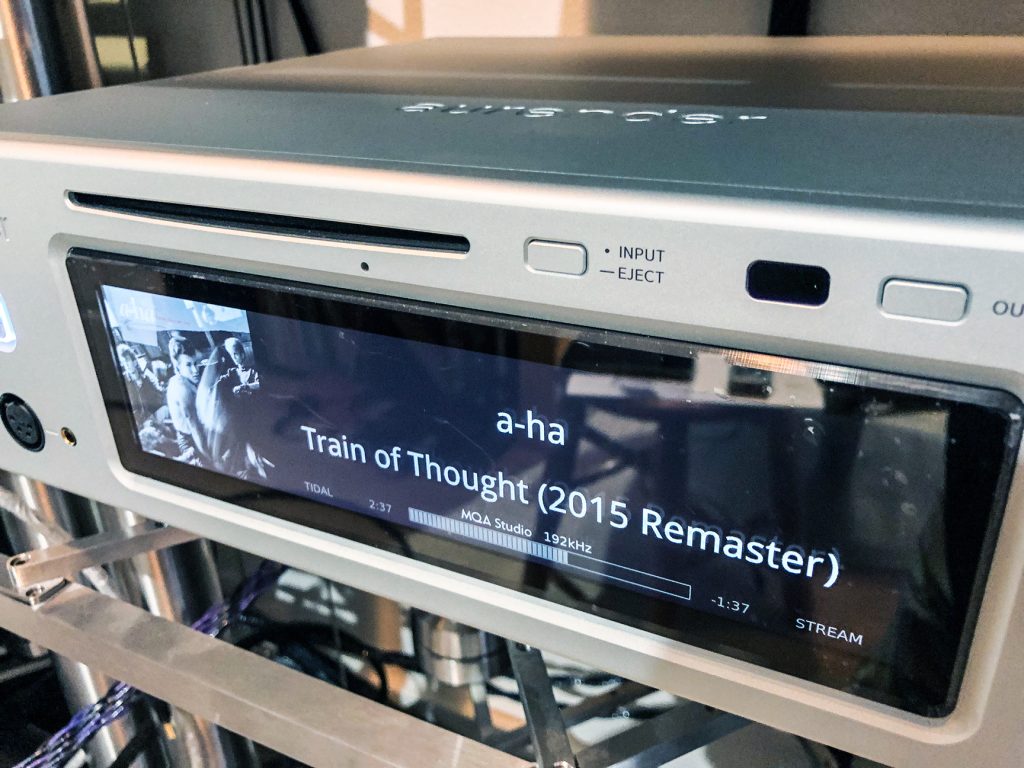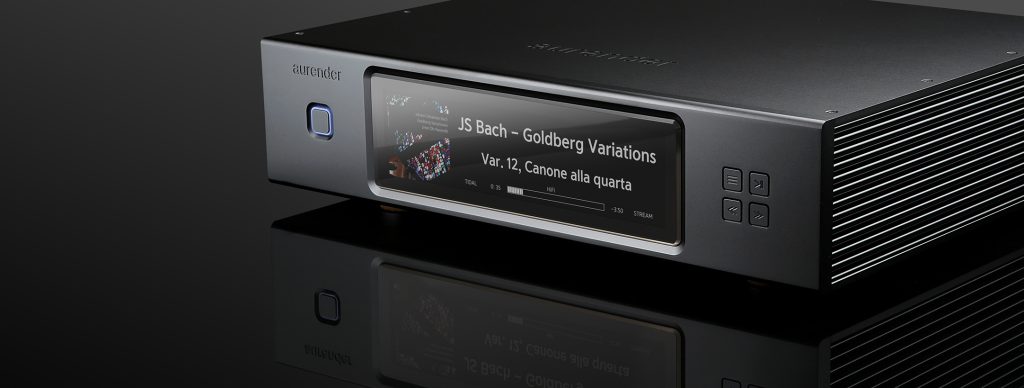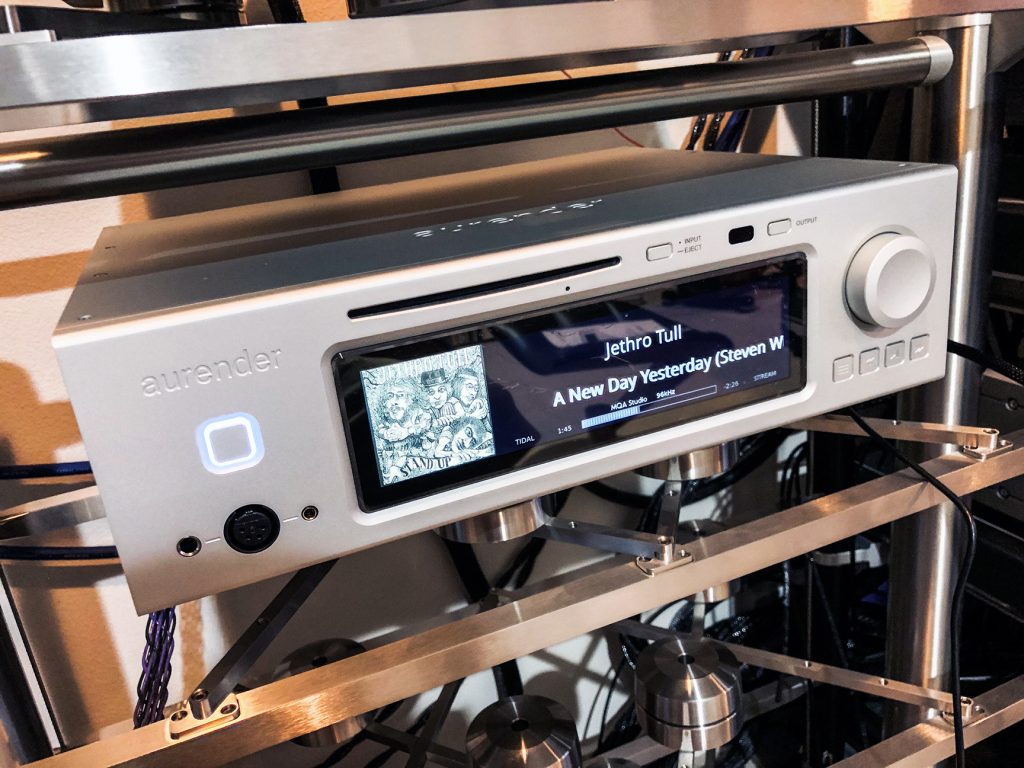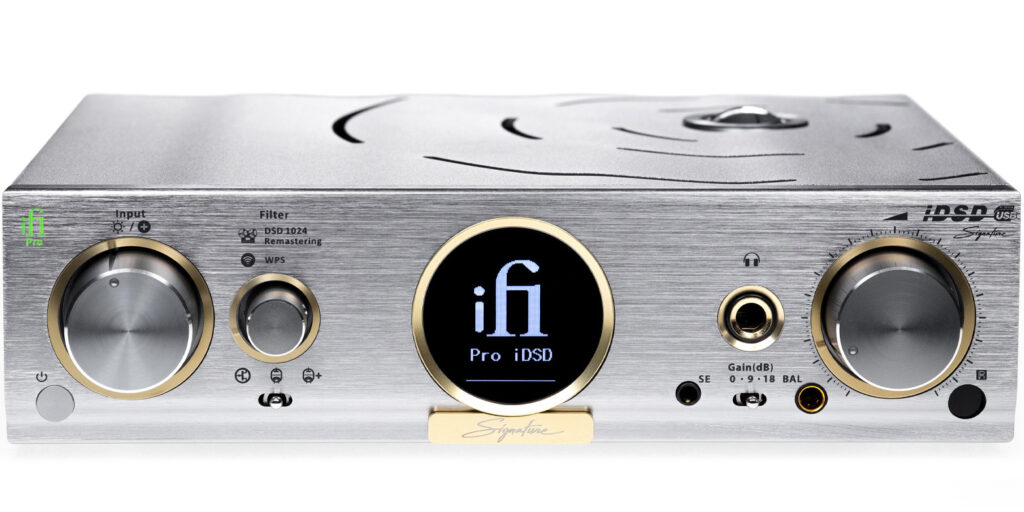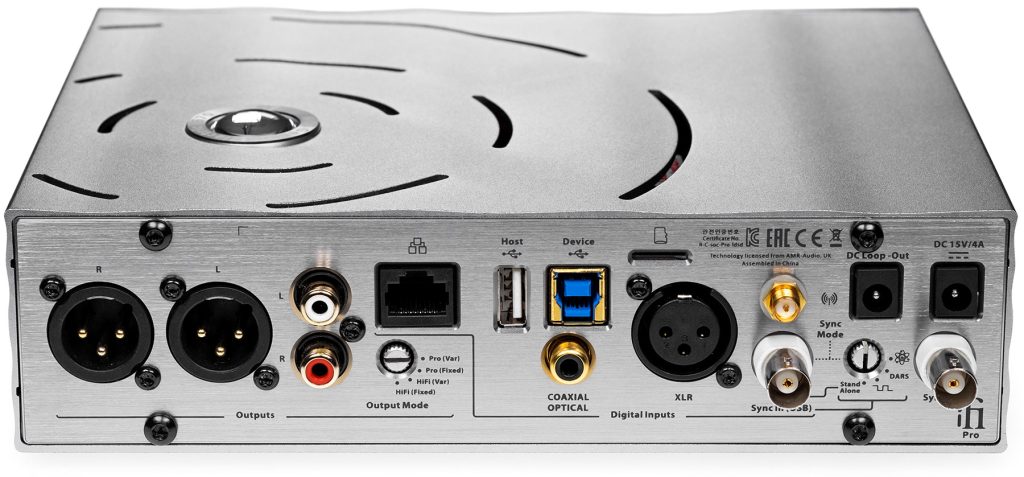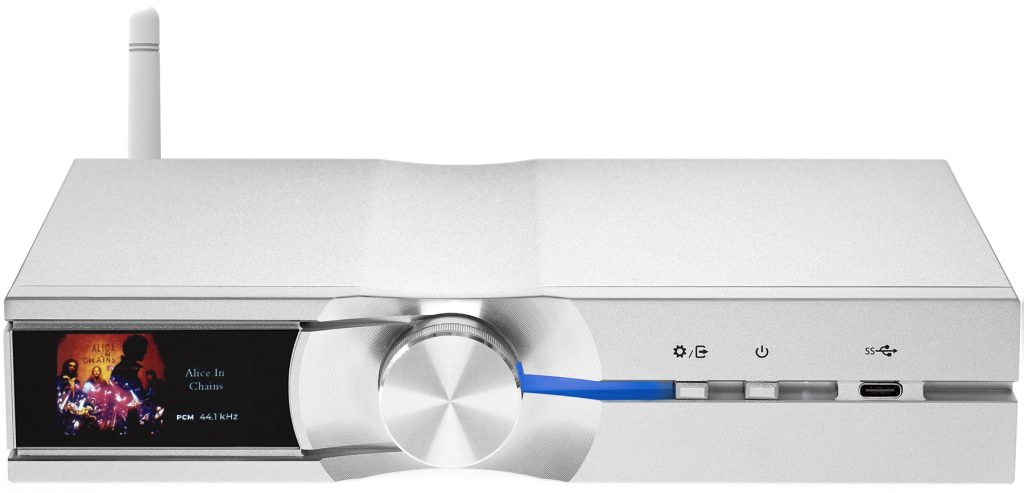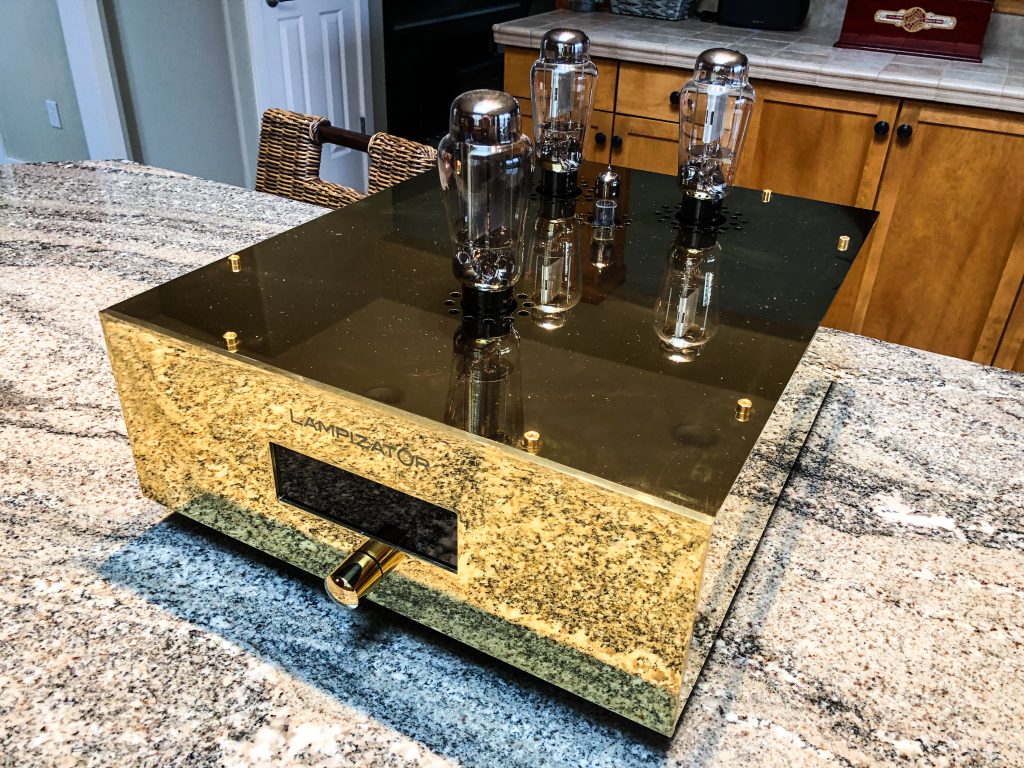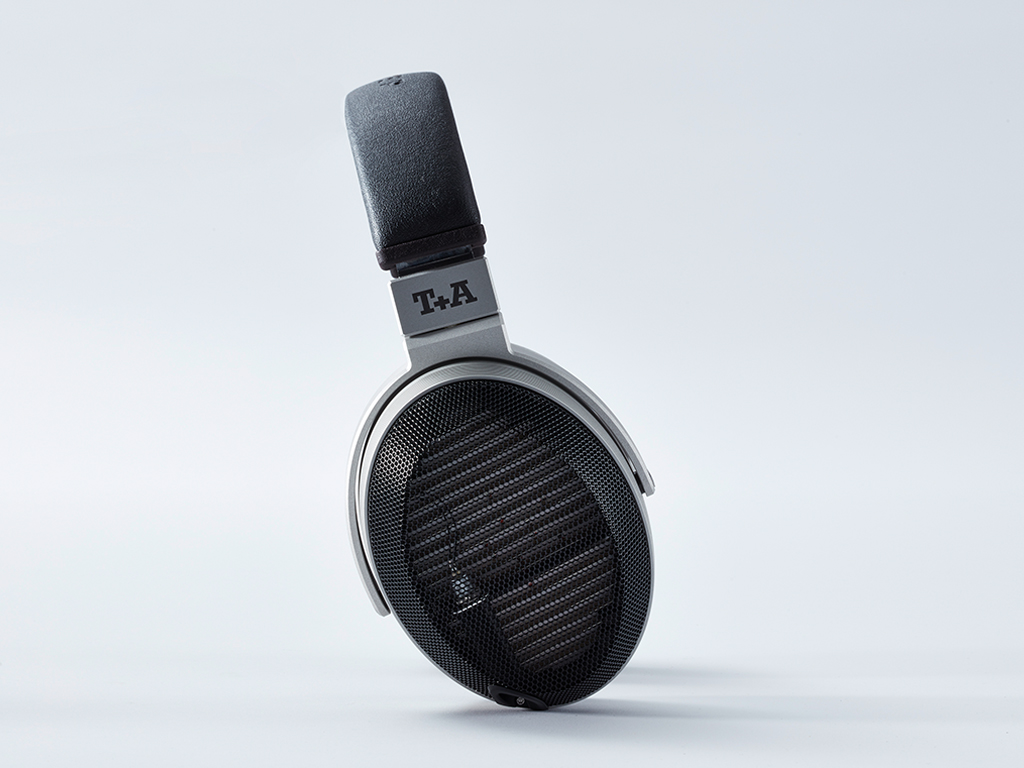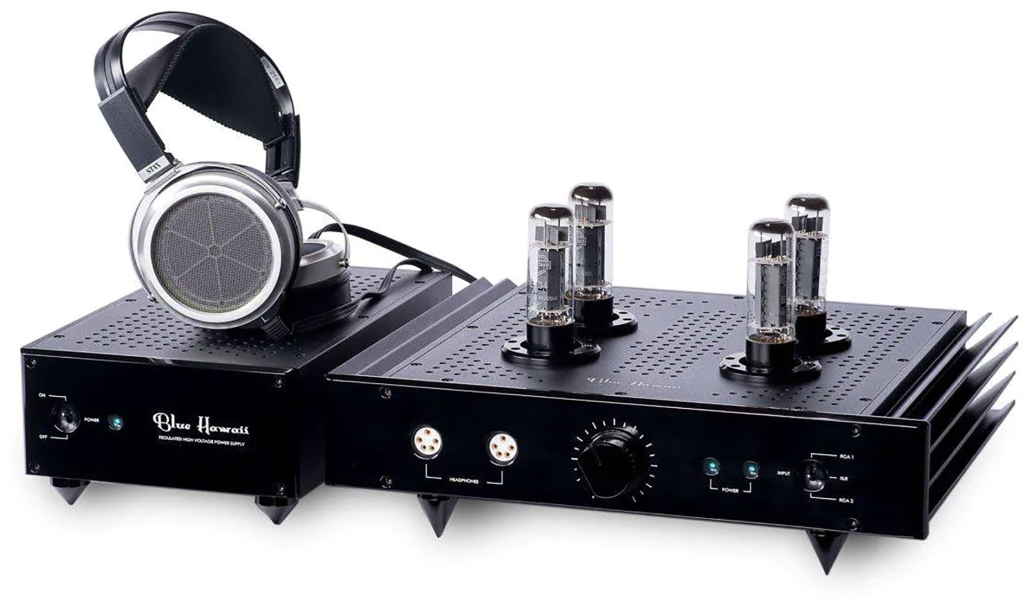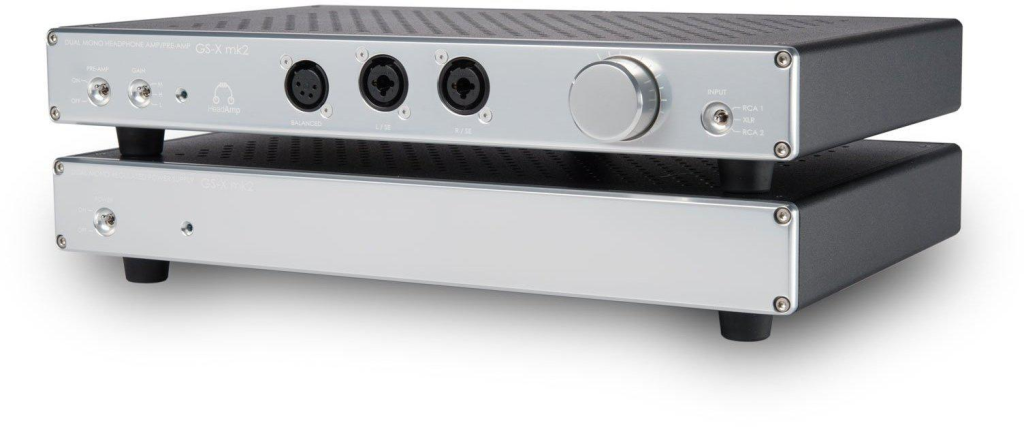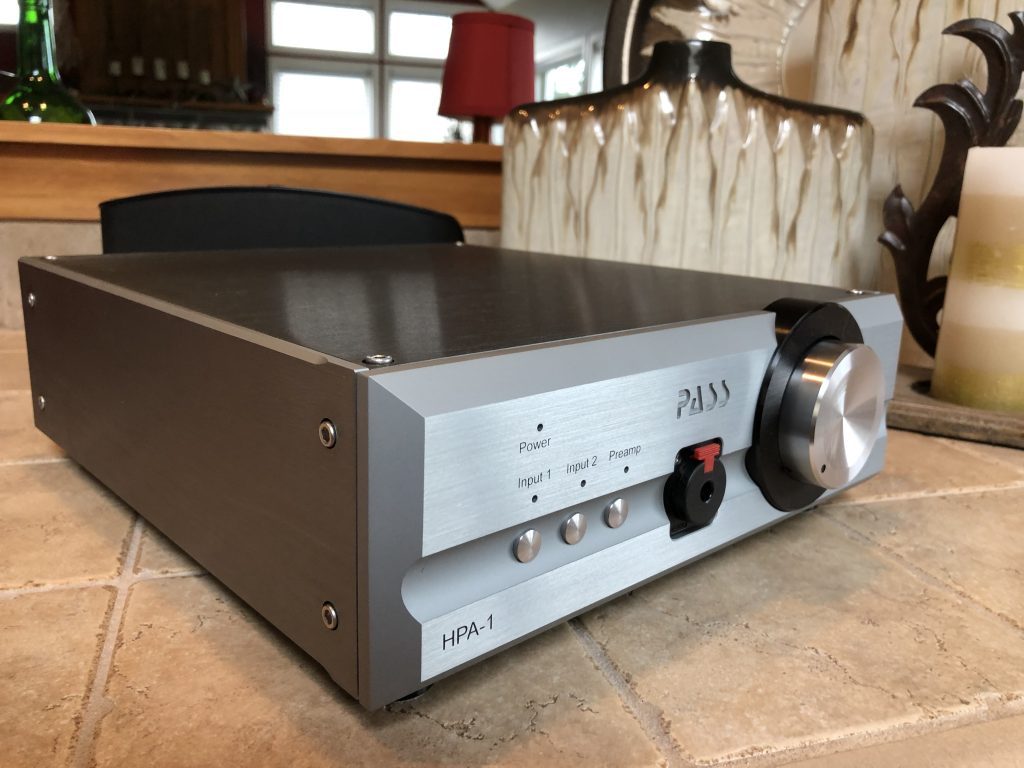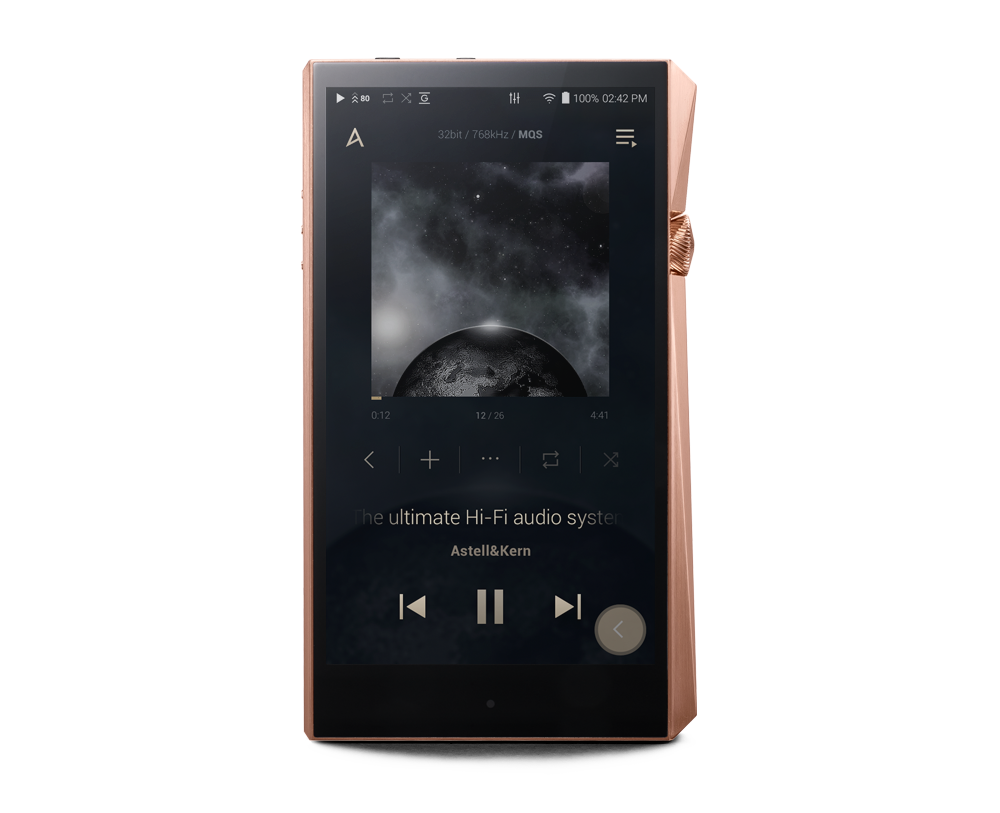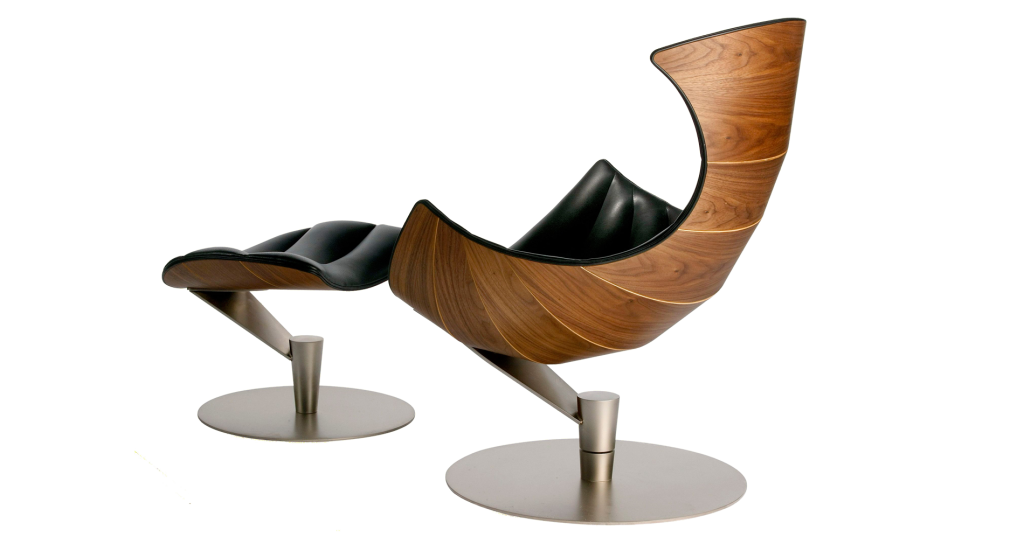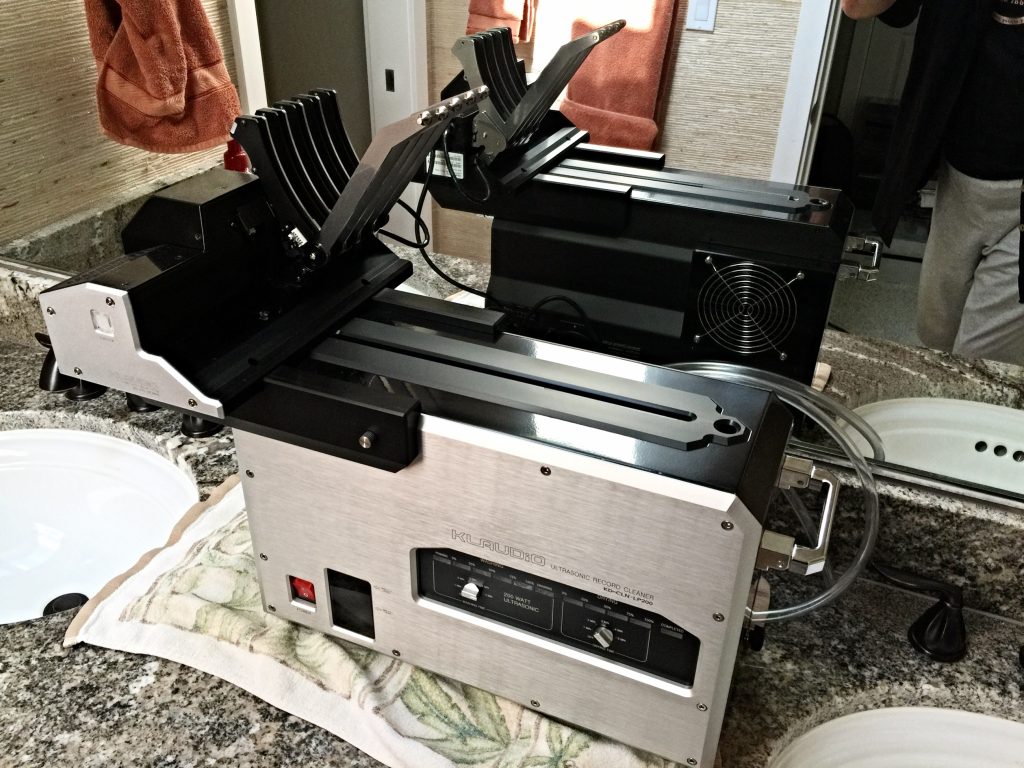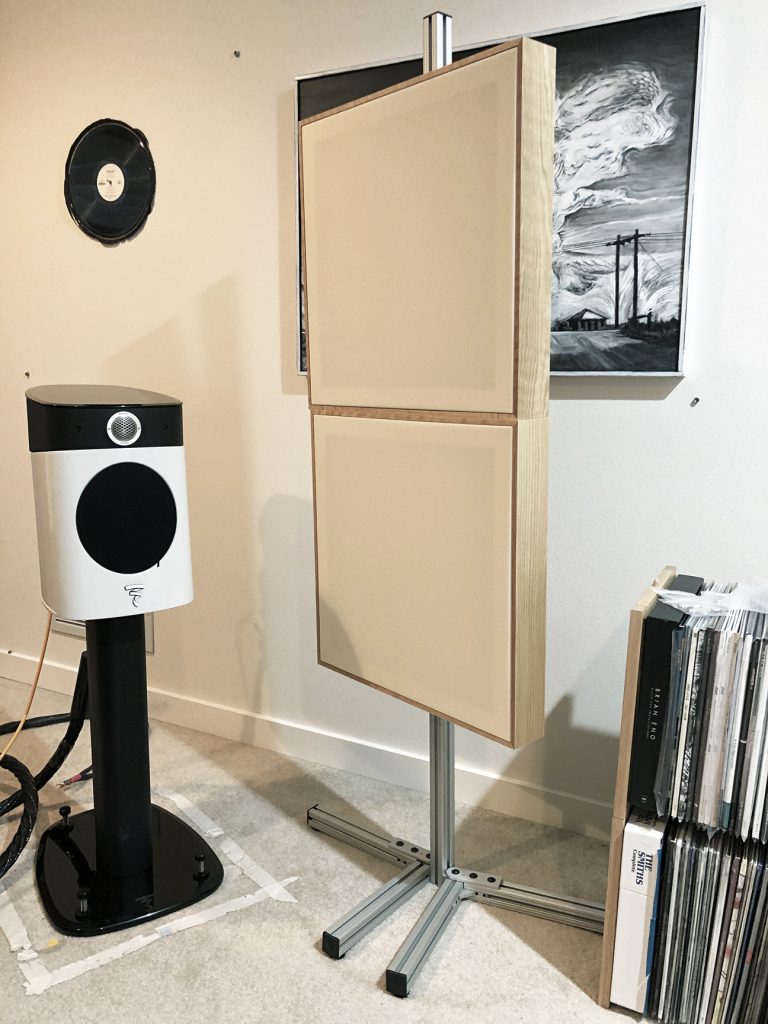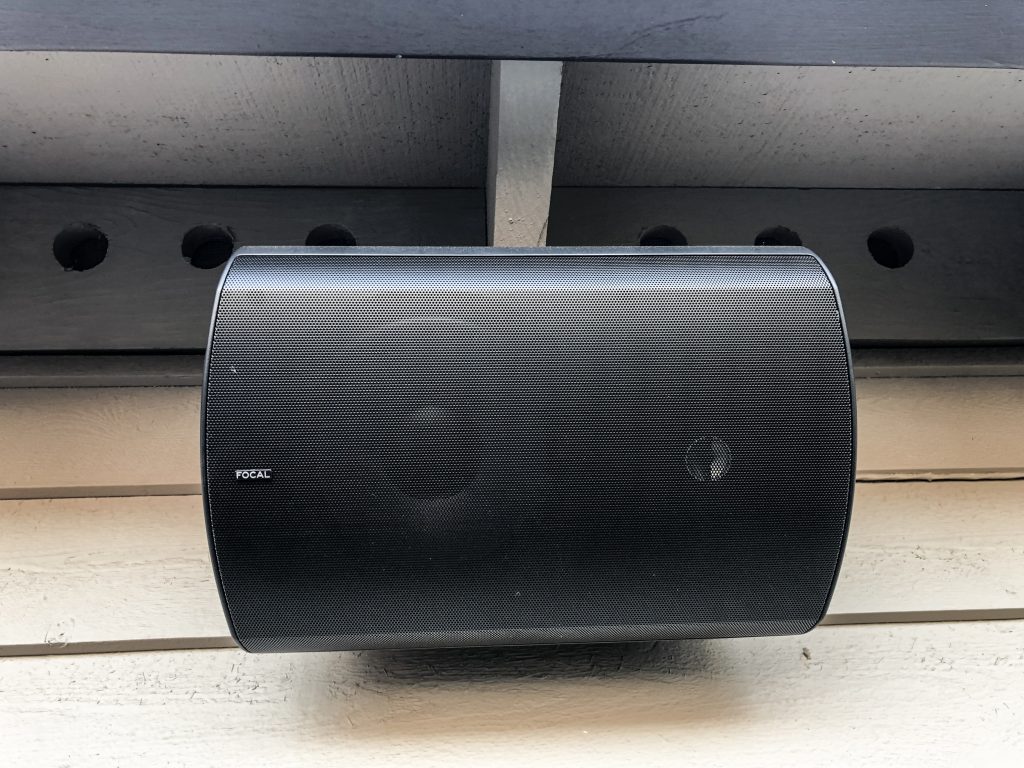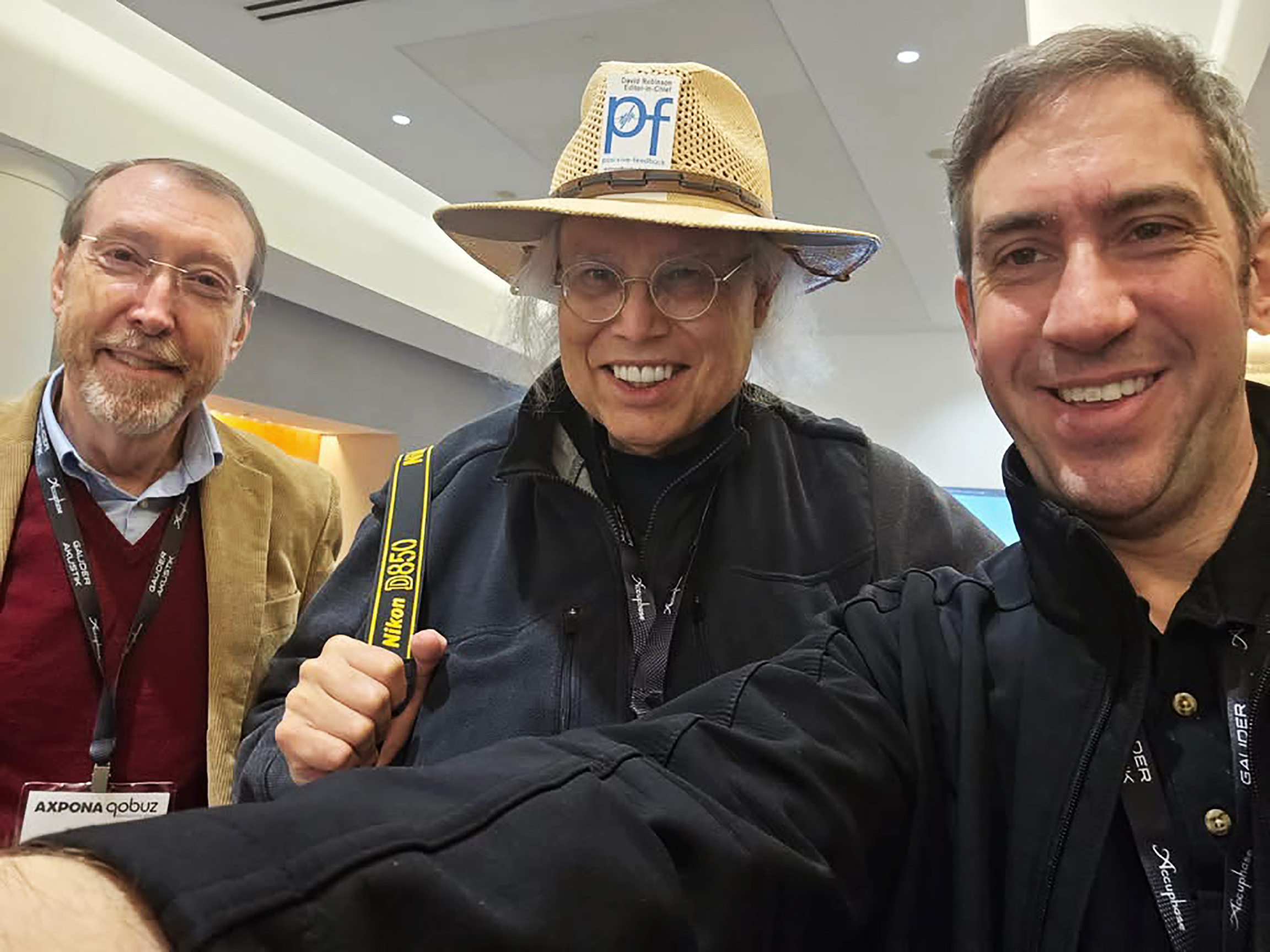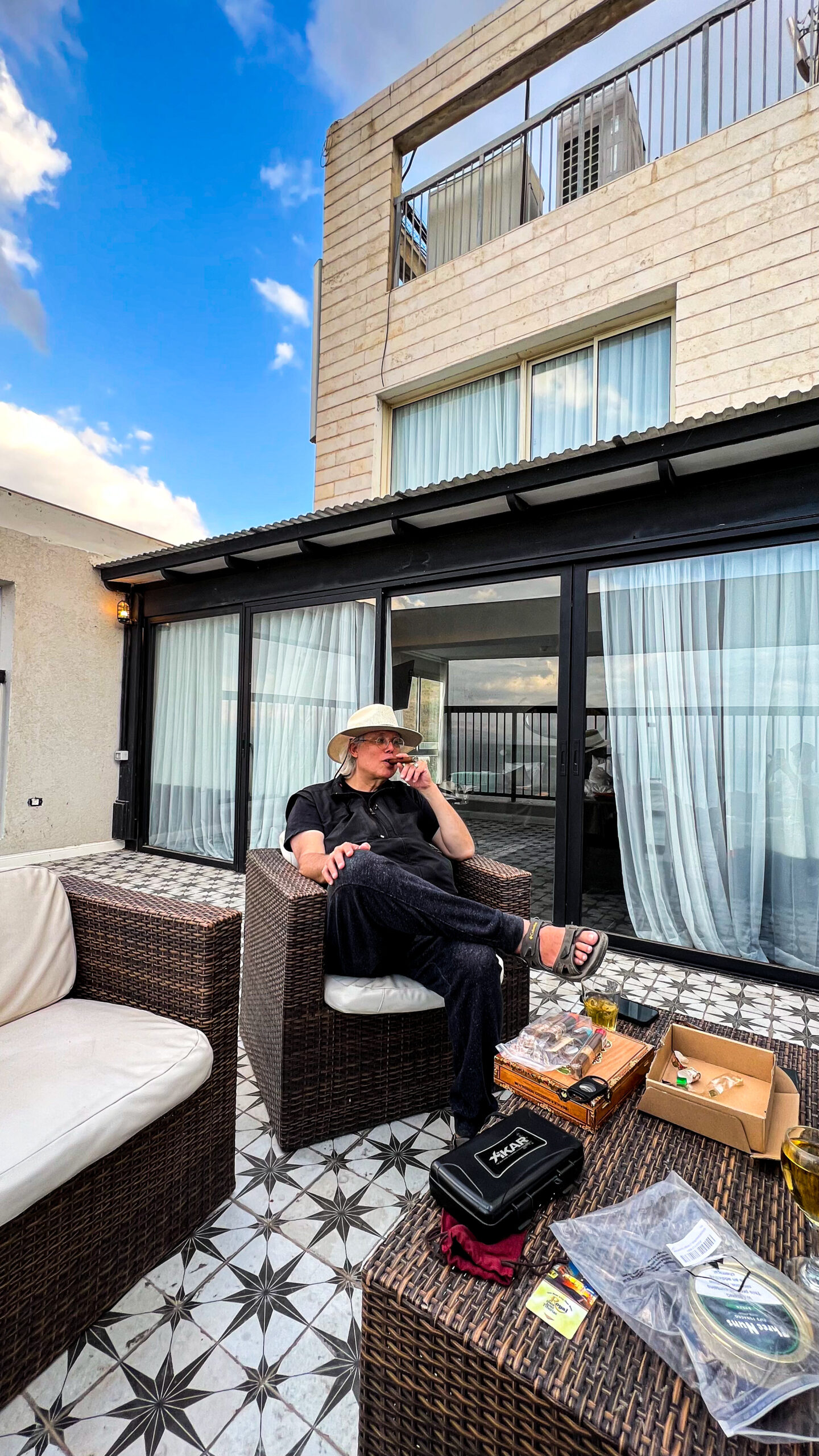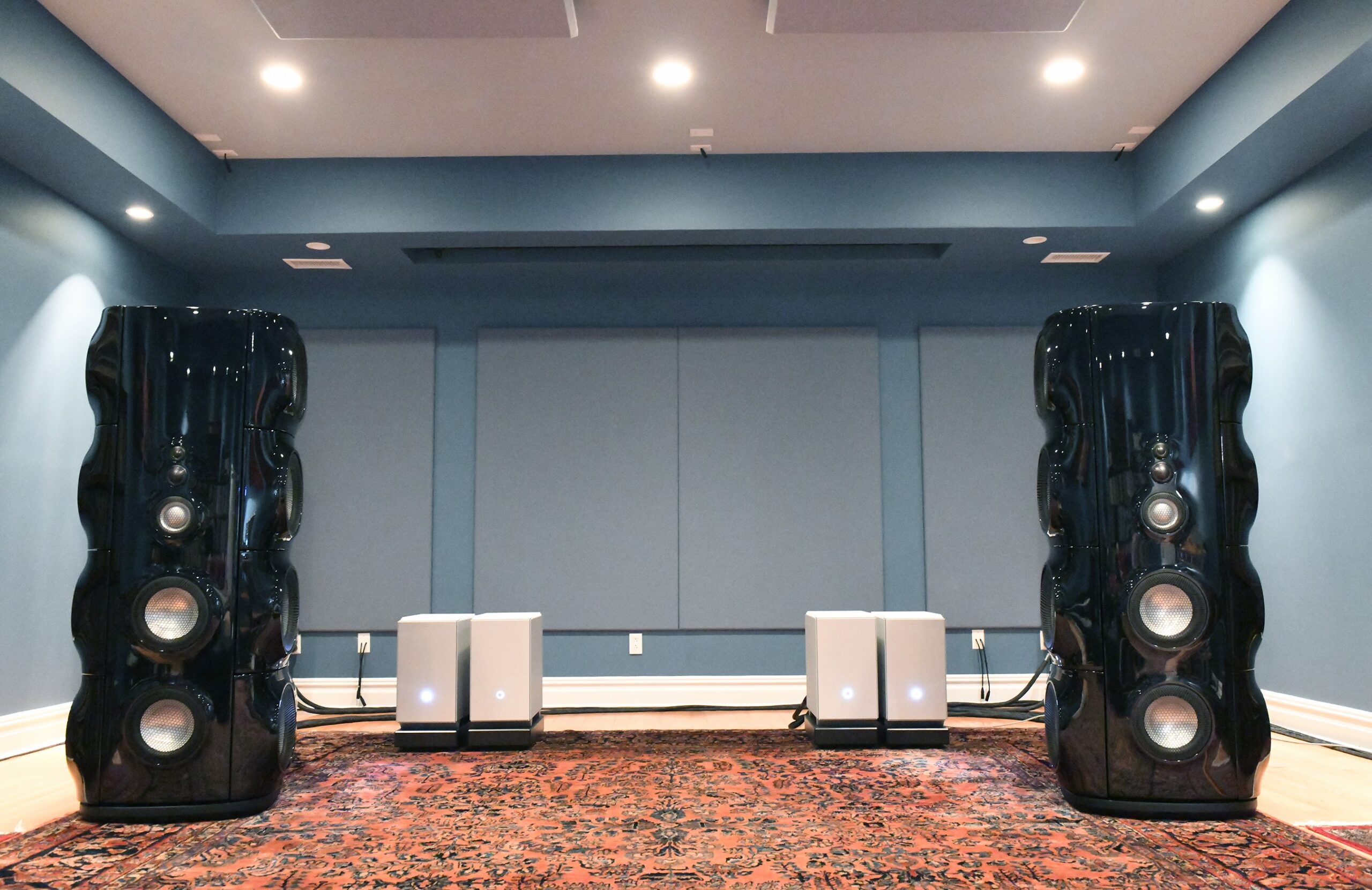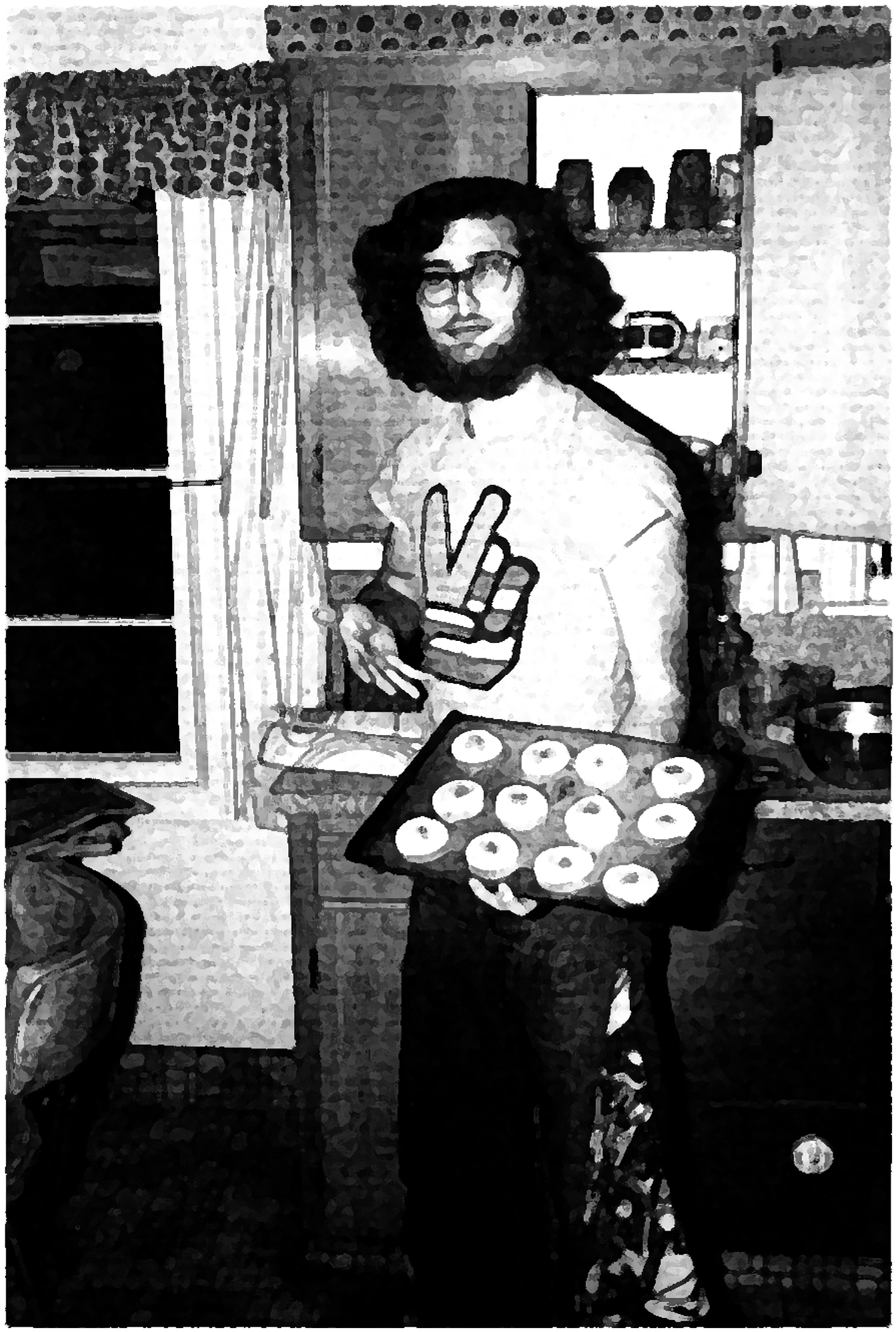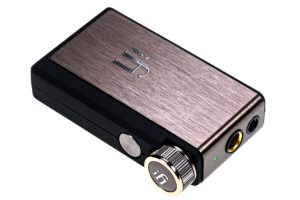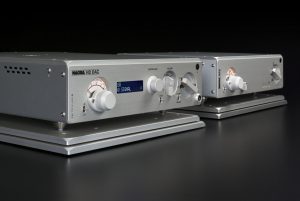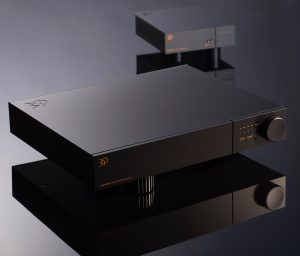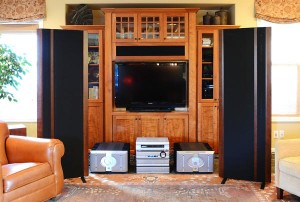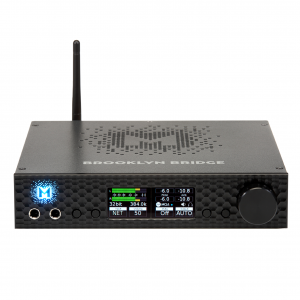
Ye Olde Editor, a moment. (Portrait by John Robinson)
Bill Parish of GTT Audio is a great longtime audiobud of mine. We go back nearly 20 years now. During that time, I've come to develop a real respect for his line card, which is always excellent, and pay a lot of attention to his recommendations of possible products of interest. Bill's never done me dirt; all of the designs that's he's steered my way have been worthwhile, and always of very high merit.
Furthermore, having spent significant time over the years visiting with him here in Portland, OR, and over there in Long Valley, NJ, I knew that our tastes in music and in what we were looking for in high-end audio gear were in the same groove. He knows my stereo reference listening room; I know his, which I consider to be the best that I've heard.
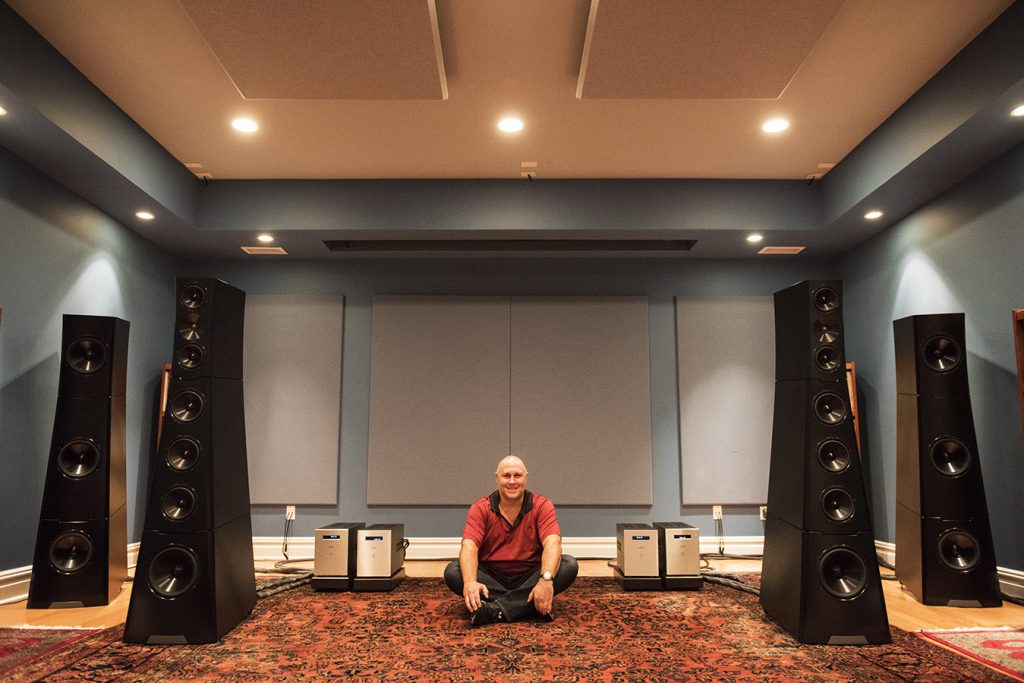
Buddha Bill in his large reference listening room: a portrait. Long Valley, NJ, 2016 (photograph and image processing by David W. Robinson)
So, when he mentioned to me in 2019 that the new Mola Mola Tambaqui was a killer! DAC, naturally I pricked up my ears.
I was familiar with Mola Mola from years past, since I had heard it in some great-sounding rooms at various audio shows. Bill has been carrying Mola Mola for a while now, and often has a room at shows in which Mola Mola is at work. Those rooms always sound special, and there have been some of my Audio Oasis! show awards going that way in years past.
There's more to the backstory, though. I also knew that Mola Mola was the brainchild of Bruno Putzeys, one of the truly gifted audio designers of his generation. He has a particular gift for ADC and DAC designs, and has worked for various companies as a consulting engineer and designer. His background included stints at Philips, Grimm Audio, Hypex, and Kii Audio. That's an impressive résumé. And he's certainly up to his neck in design work for Mola Mola.
The Mola Mola lineup in general is an exceptional and unique family of products. They embody compact design with seductive lines, looking like nothing else out there in the world of high-end audio.
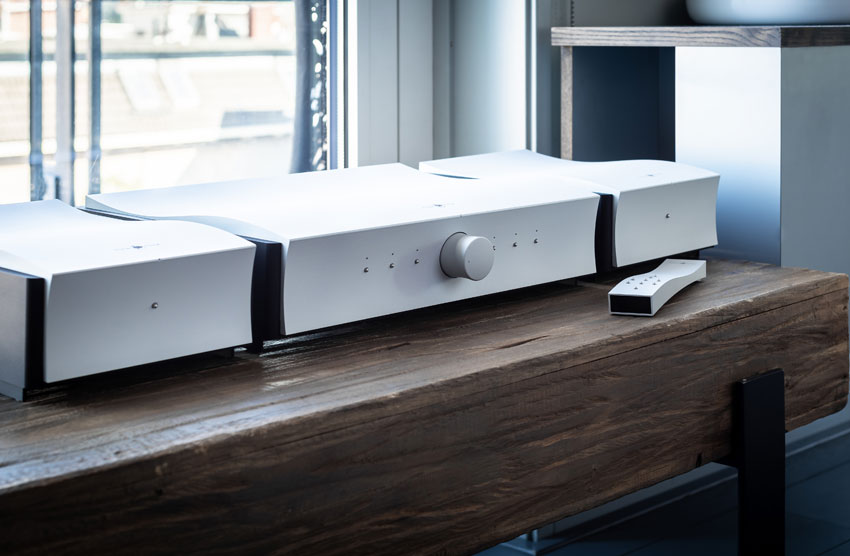
Mola Mola Makua Preamp (middle) with the Kaluga monoblocks: smokin' great lines! And they sound great too… (image courtesy of Mola Mola)
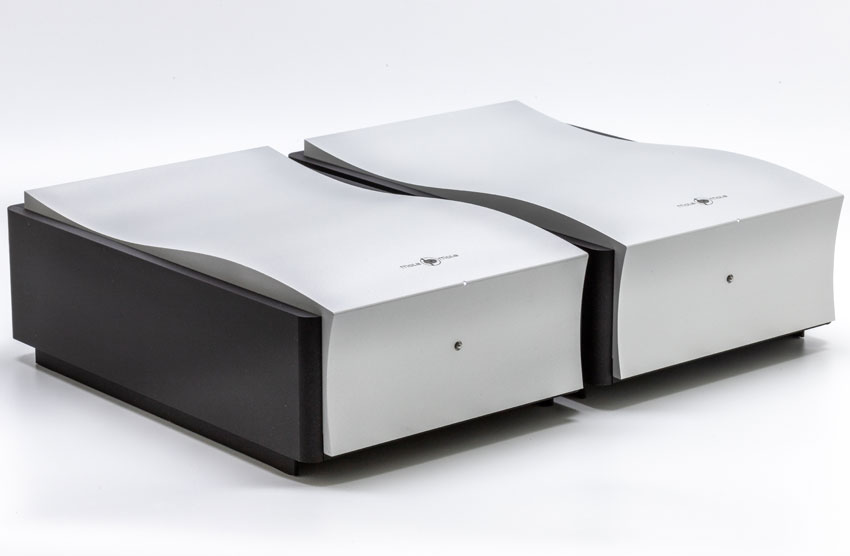
The Mola Mola Kaluga monoblocks: curves in space (image courtesy of Mola Mola)
While I haven't (yet) had the opportunity to hear the Makua/Kaluga combination in our reference rooms here, the experience that I'd had with them at shows made me confident that I was going to be hearing some excellent sound when the Tambaqui DAC arrived.
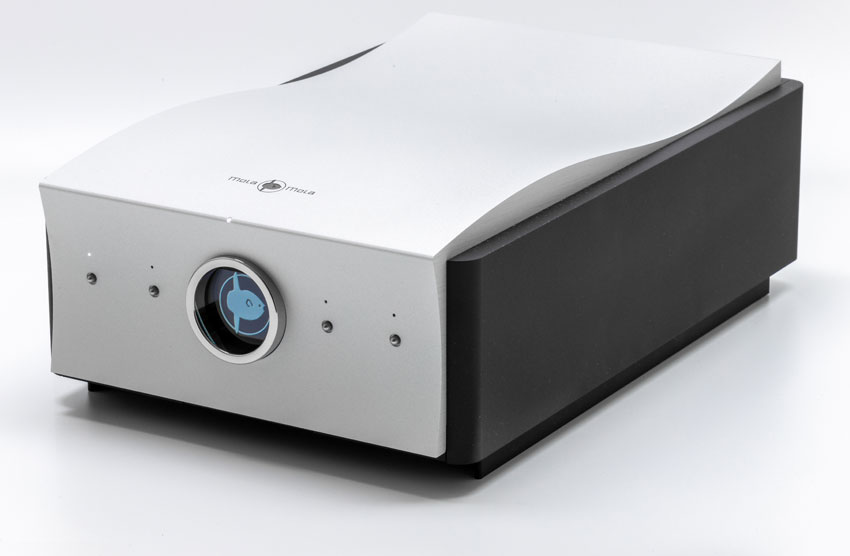
The striking Tambaqui DAC (image courtesy of Mola Mola)
The Tambaqui arrived in a professional Pelican-style case within an outside box. I immediately unpacked it, and got it into place in our reference office system for some focused near-field listening.
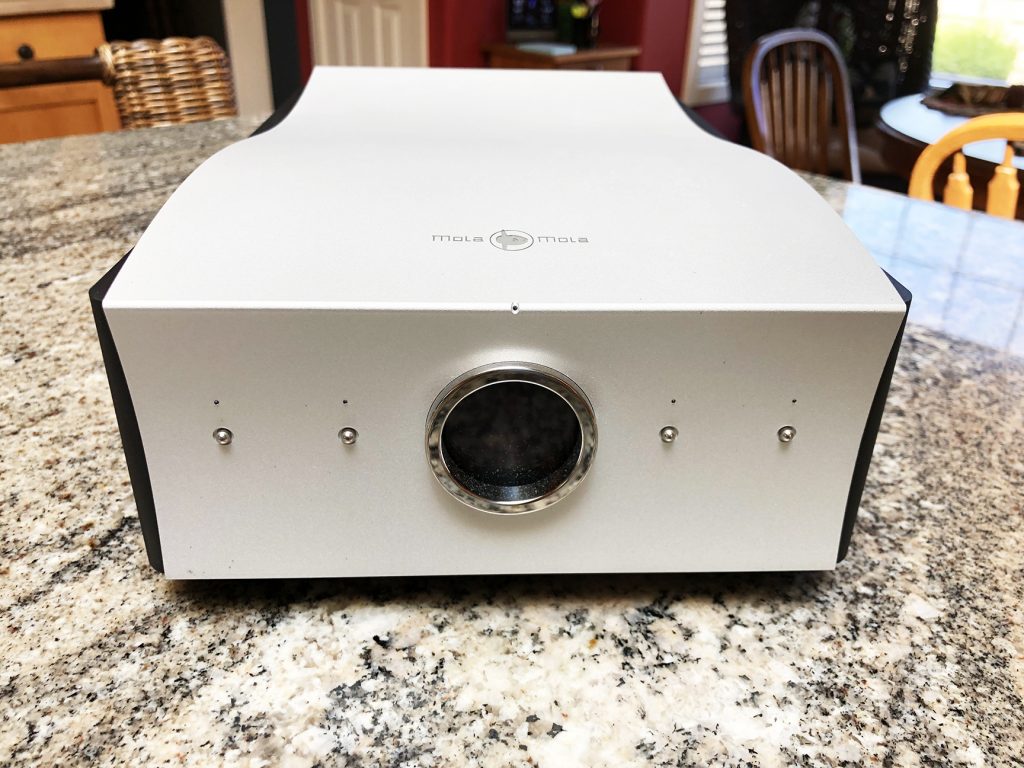
The Mola Mola Tambaqui upon arrival at PF River City (photograph and image processing by David W. Robinson)
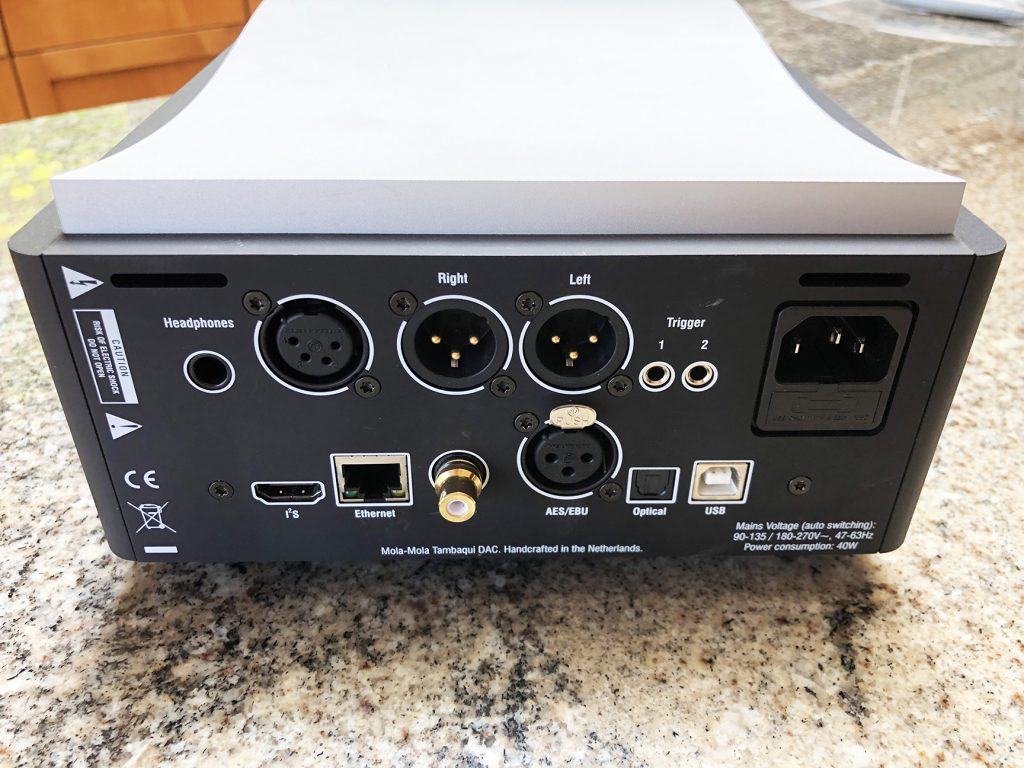
Rear view of the Mola Mola Tambaqui, showing its array of I/O options (photograph and image processing by David W. Robinson)
Plus Bruno. Yes, Bruno.
Given my experience with Bruno's earlier work, my discussions with him, the respect that people like Jared Sacks of Channel Classics had for his earlier work with Grimm Audio, I had him in the same very rarefied front rank of DSD designers as, say, Andreas Koch of Playback Designs. Global top notch, for sure.
It was going to be really fine, I was certain.
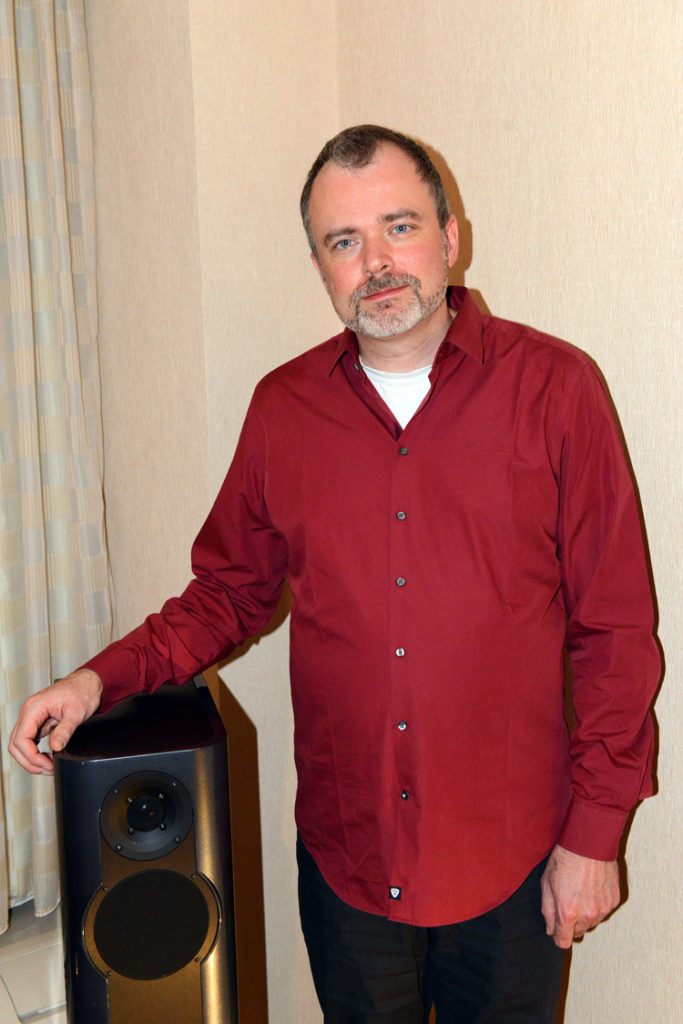
Bruno Putzeys with the Kii THREE loudspeaker, a portrait from 2016 (Photograph and image processing by David W. Robinson)
Technical Notes and Specifications
Let's take a quick break to get the hardware profile.
The Mola Mola Web site for the Tambaqui outlines some key notes and specs for the unit.
Under "operating principle":
"PWM DAC with 32-stage discrete analogue FIR output stage. Avoids "sigma delta" tones and "R2R" glitch and low-level linearity errors.
Asynchronous upsampling to 3.125MHz/32 bit. 7-th order noise shaper clearing 80kHz band. Each input rate has an optimized upsampling filter chain."
PWM is Pulse Wave Modulation. All incoming digital goes to PWM and then upsampling. No discussion of specific chipset; instead:
"The converter is a two-board stack. On the first board, all incoming digital audio is upsampled to 3.125MHz/32 bits and converted to noise shaped PWM. On the other board are two mono DACs, in which a discrete 32- stage FIR DAC and a single-stage 4th order filtering I/V converter, convert the PWM into analogue with a breathtaking 130dB SNR. This is near the theoretical limit for 24-bit files and far beyond that of even quad-speed DSD. Uniquely, distortion remains below the noise floor even for full scale signals."
So the converted PWM goes to dual FIR DACs, which sections then output the PWM input to analog with no further reconversions.
And since the Tambaqui has a lossless volume control system and supports 4-pin balanced out for headphones, it really acts as a full DAC/headphone amp/preamp for those who have gone to pure digital for their audio playback.
Add to that is the fact that the Tambaqui is Roon Ready, with the requisite Ethernet port, and folks who love to stream (that ever-increasing crowd) aren't left out.
As to the rest of the specs:
I/O
- Optical (Toslink)
- S/PDIF (Cinch)
- AES/EBU (XLR)
- USB type BEthernet
- (Roon Ready)
- Bluetooth (SBC, AAC, APTX, LDAC)
- I²S over HDMI
- Balanced output (XLR)
- Headphone output (6.3mm Jack, Balanced XLR 4pin)
- 2 programmable trigger outputs (3.5mm Jack)
- Processing balance and input gain offset
- Selectable output levels
- Phase invert
Supported Formats
- PCM up to 384kHz/32 bits (>192kHz and >24 bits via USB and Roon only)
- DoP and Native DSD up to Quad (DSD256) speed (USB and Roon only)
Performance
- Full-Scale Output Level (XLR): 18dBu
- Full-Scale Output Level (headphone): 18dBu
- Signal to Noise Ratio: 130dB
- THD, IMD: not measurable (estimated -140dB)
- Bandwidth: Up to 80kHz (apodizing response)
- Integrated jitter: <1ps from 10Hz upwards, <300fs from 1kHz upwards
- Jitter rejection: >80dB at 1Hz after 20 seconds of loc
Control
- 4 programmable presets
- (Premium) Remote Control
- Mola Mola Remote app
Dimensions and Weight
- 200mm (W) x 110mm (H) x 320mm (D)
- 5.2kg
Note that the Tambaqui can take upwards of a minute to fully initialize, before its USB connection will be detected by Windows 10. Don't worry; just wait for the familiar USB init ping from Windows…then it's ready.
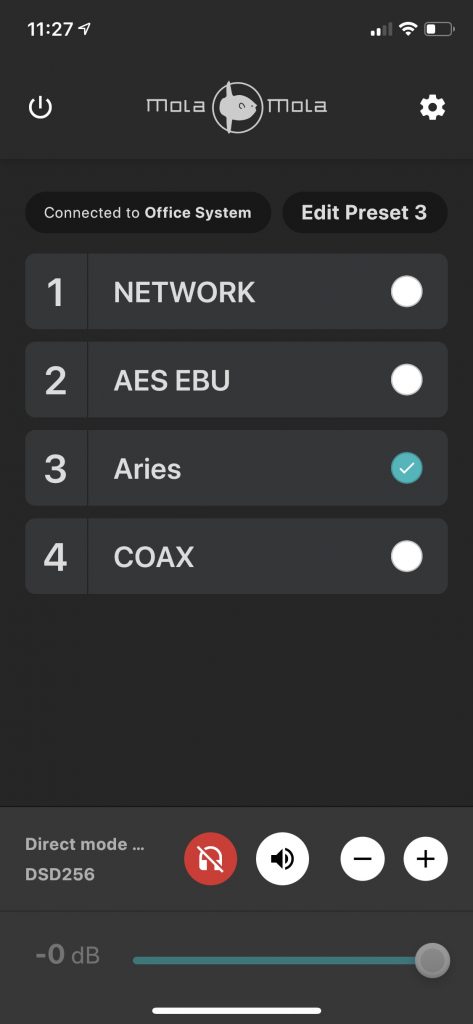
I found that the inputs/functions were easily switchable via the front panel buttons, or via the iPhone Mola Mola app. The front display panel is easy to read and quite functional, without being cluttered. Firmware updating via the iPhone app was very straightforward, and worked without a problem. (Not every app does. By the way, while doing any updating, and as with any DAC, make sure that your preamp is muted/the preamp input is switched away from the DAC, to avoid any pops or sudden noise.)
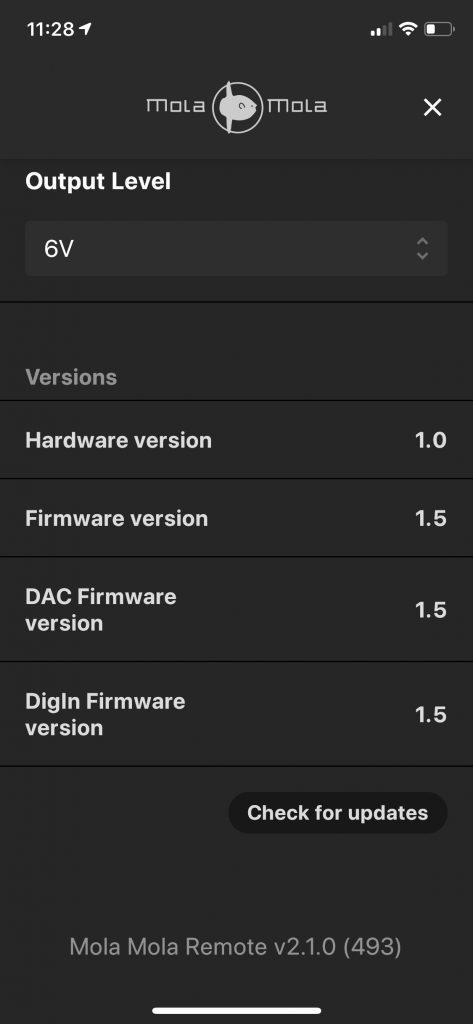
The stand-alone Digin updating app for the deep internals is a separate download, and has its own manual procedure for dealing with updating. This is more challenging, but it was not hard for me to do, and worked inside of a few minutes without a hitch. This process does necessitate an unplug of the USB cable and power cord for 20 seconds, followed by plugging them back in and letting the Tambaqui reset. I adjudge the software engineering of the Tambaqui to be very sophisticated and well thought out…a pleasure to use.
So much for the hardware profile and the chassis photographs. Onwards.
Listening Impressions
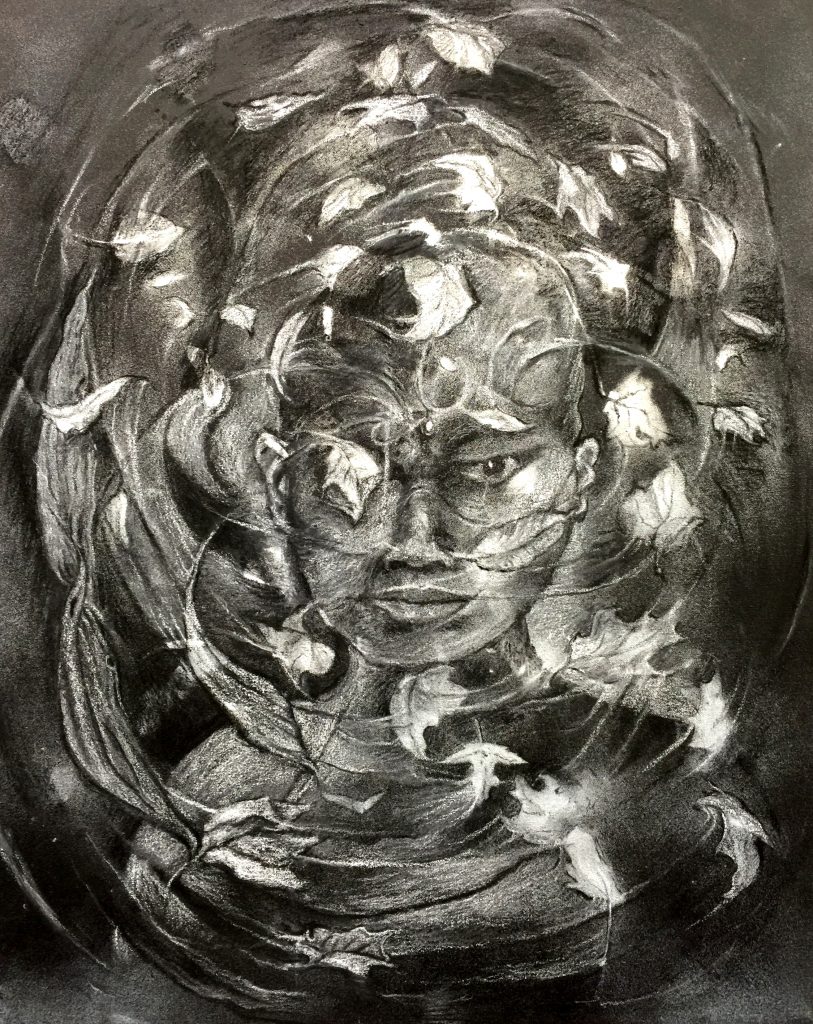
(Drawing by Dan Zimmerman)
Well, it always gets down to this, doesn't it?
Before I sum up my evaluation, several points.
First, Bill Parish was kind enough to send me a fully broken-in review sample. This saved me a number of hours of running music through the unit, getting it to the point of blooming.
Second, with the Tambaqui I concentrated very strongly on its DSD performance, checking Single, Double, and Quad DSD speeds with the terabytes of reference source files that we have here. I did check its PCM performance with .WAV, .AIFF, and .FLAC recordings, from 44.lkHz out to 192kHz/24 bit. There were no problems at all, and sudden switches from one format to another, regardless of type or resolution, were smooth and soundless.
Third, being swamped already with streaming/Roon devices in our various listening spaces, I didn't spend time with streaming capabilities on the Tambaqui. Given what I was hearing via my PCM listening, I could safely assume the results, which were superior.
Finally, the front-end player software that I used was JRiver's Media Center 26, the latest stable version. It was running on our fire-breathing Dell Precision T7920 64-bit Tower Workstation with Windows 10 Professional, Blu Ray R/W and DVD R/W optical drive, NVidia High Definition audio, dual Intel Xeon Silver 8-core processors, 64 GB ECC RAM, 4 TB RAID 1 hard drive array with multiple external 3, 4, 5, and 8 TB USB 3.x hard drives. Media Center has been a years-long app for playing many of our DSD files here; version 26 has been brilliant in this project.
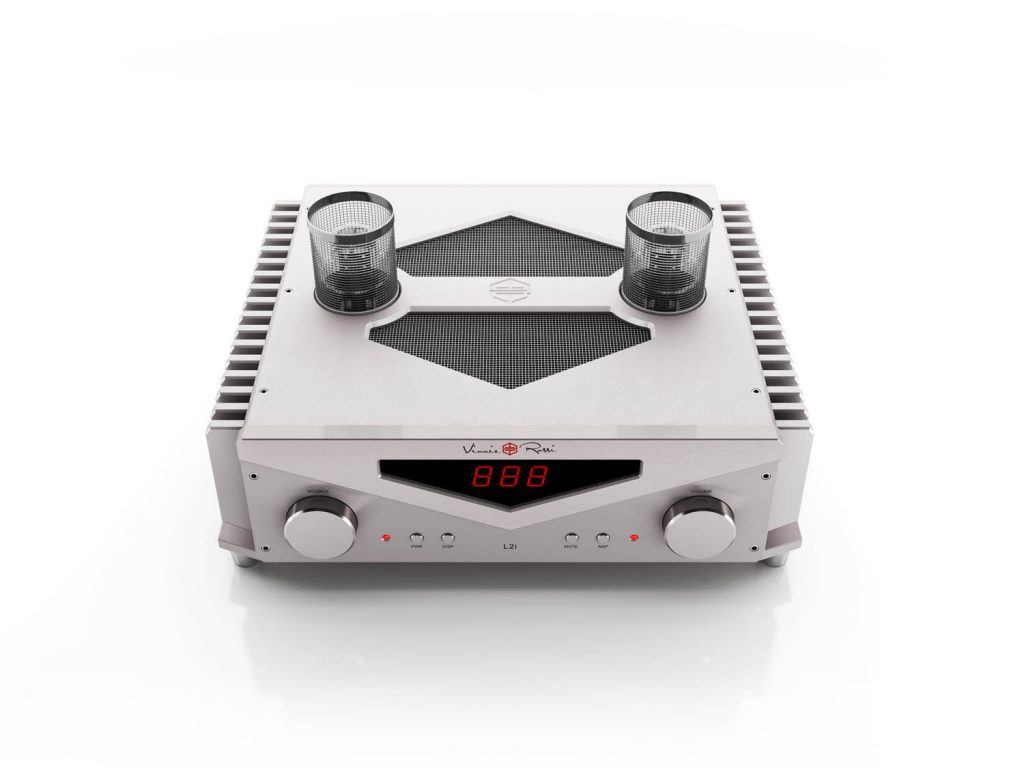
The Vinnie Rossi L2i-SE Integrated Hybrid Amp; this model with optional phono section and Quad DSD DAC (image courtesy of Vinnie Rossi)
As I said, the review sample was placed in our reference office/desktop room. I did listen with three different integrated amps: The Playback Designs IPS-3; the ModWright KWH 225i (final production prototype); and the Vinnie Rossi L2i-SE. The first is solid-state, while the other two are hybrids.
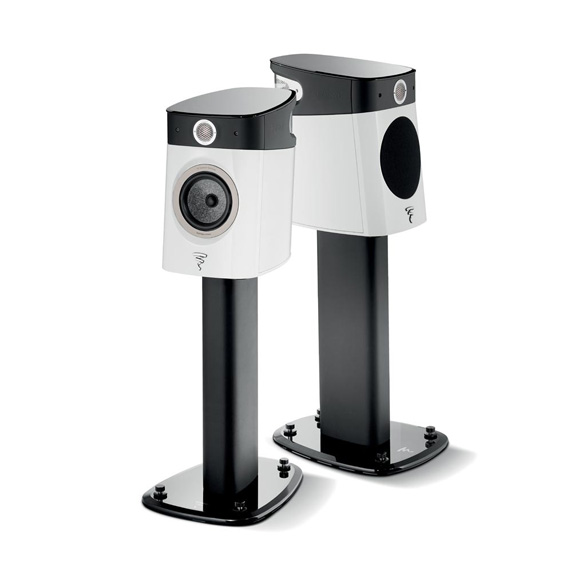
The Focal Sopra 1 Monitor Loudspeakers on their dedicated stands (image courtesy of Focal Naim USA)
The loudspeakers were the Evolution Acoustics Micro Ones on Wave Kinetics isolation feet, which were followed by the Focal Sopra 1 monitors with dedicated stands.
Cabling/power is by Kubala-Sosna (Realization USB), Synergistic Research Galileo SX series Power Cable and Atmosphere XL, TARA Labs XLR and Speaker Cables, Clarus Concerto AC Line Conditioner and Power Distributor, and Furutech NCF Power Cables, Daytona 303 Line Conditioner and AC Distributor and NCF Boosters/Booster Braces.
The resulting system is extremely transparent, coherent, highly revealing, and a musical joy in a near-field deployment. Whatever was feeding it was going to be spotlighted, either for glory or for mediocrity.
As mentioned, I've spent the past eight months passing terabytes of Single, Double, and Quad DSD through the Tambaqui to feed the various configurations listed above. Some of these files are unobtainium, not commercially available. (Having audio engineers as buds can be a very useful thing when you're evaluating high-end gear.) But many others are easily available commercially. There are far too many of them to list here…literally several hundred albums. For those interested, the main body of them were sourced from NativeDSD.com, High Definition Tape Transfers, and Blue Coast Records. Some additional titles came from Acoustic Sounds Super Hirez download site. Various genres were used, from classical and jazz to rock, alternative rock, some (good) pop, and even ambient/contemplative/electronic music.

Right out of the box, this being a broken-in unit, I was startled…really startled…within seconds by the exceptional quality of the Tambaqui's playback of a favorite reference DSD256 album that I had put on. (HDTT's very fine Howard Hanson: American Romantic, as I recall.) It was instantly revealed as a first-rank DAC, with no apologies or excuses offered to the other reference DACs that we have here. (And yes, we have several of them, all brilliant performers.) In fact, for the first few minutes, I sat there just taking in the quality of a recording that I had heard many times, both in DSD256, and in 15 IPS RTR. I really was amazed.
Within short order, all sorts of recordings went on parade, in various flavors of DSD, a pattern that was maintained for months. Since the Tambaqui was in our reference office system, I was able to listen to it every day while I worked on Positive Feedback writing and business. I couldn't even begin to count the hours that I listened to it, through several different sets of hardware systems. No matter the platform, the quality of the Tambaqui remained a reliable constant in my daily experience. What a rock it is!
Qualitatively, regardless of the recording that I used, the music it produced was transparent, clean, and clear. Dynamic albums had slam and slew rate to burn. The dynamic range was incredible, going from pure silence to "Incoming!!!" in without breaking a sweat. Beethoven's 5th, Sibelius' Kullervo, Led Zeppelin transfers, Spitball's Pop Condition (a truly dangerous-in-its-dynamics pure DSD recording…try finding that one!) all benefitted obviously from the 130dB dynamic range of the Tambaqui.
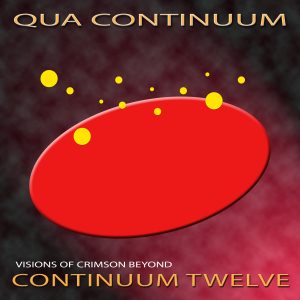
The texture of recordings was all laid bare with the Mola Mola. There's a tactile feel to the sonics, as if you reach out and rub the air. Cookie Marenco's Qua Continuum series of recordings are killer to hear in DSD256; Continuum Twelve, their latest, will haunt you late at night. Detail left nothing to be desired in our systems, although the best resolution of same came at DSD128 and DSD256.
Soundstaging and imaging are top notch with the Tambaqui. No matter which combination of components that I was using, and assuming proper placement of the speakers, the results were enveloping. The better the recording…say the RCA Living Stereo classic classicals from Acoustic Sounds…the more intense the feeling of thereness.

Above and beyond that, however, there was an incredible ease and naturalness that enveloped all of the recordings, as if they simply floated in the air. This produced a potently seductive musicality that was anything but merely euphonic, since I wasn't hearing any coloration at all. This is the sort of audio virtue that I've identified with the exceptionally high praise of organic. Only the very best systems, in my experience, can get the harmonic wholosity of wonderful music and a great recording in the superior format of DSD and do it in a way that makes you swim in the resulting glory. You relax; you unwind; you drift; and you dream. (Want to feel the same thing? Well, purchase and download TRPTK's Reid in DSD256 from NativeDSD.com…assuming that your DAC can handle Quad DSD. You can thank me later.)
The Mola Mola Tambaqui DAC does all of those things, and reminds you of why you love music and the audio arts so passionately: because it has the power to transform you, and lift up your soul.
Yes, that's why we seek such mountain-peak quality. And the Tambaqui has it by the megaton.
Lest I forget, one more piece of great news for those considering the Tambaqui: Mola Mola is going to provide a firmware update later this year to add DSD512 playback to the unit. Given what I'm already hearing with DSD512 albums from NativeDSD.com on other DACs, I can hardly wait to hear how this will sound on the Tambaqui!
Conclusion
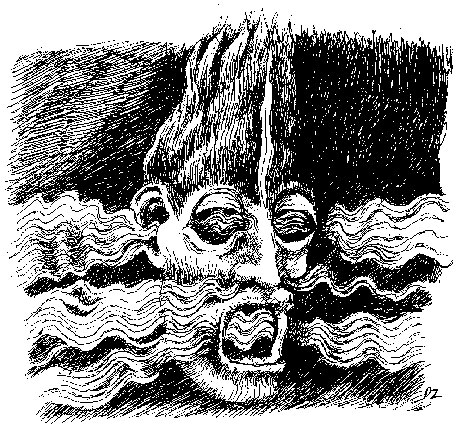
(Drawing by Dan Zimmerman)
What more can I say? Bill Parish was quite right when he told me that this was a killer! DAC. I have to agree. The Mola Mola Tambaqui DAC is an absolutely extraordinary, top-o'-the-heap product, true reference-grade in every way.
It therefore richly merits a "Ye Olde Editor's 'Very Highest Recommendation!'", and that with really great enthusiasm.
All of which is why I gave the Tambaqui one of my PF Brutus Awards at the end of 2019 in my very first installment of those announcements.
And if you get a chance to hear the Tambaqui, you'll know why I did so.
Immediately.
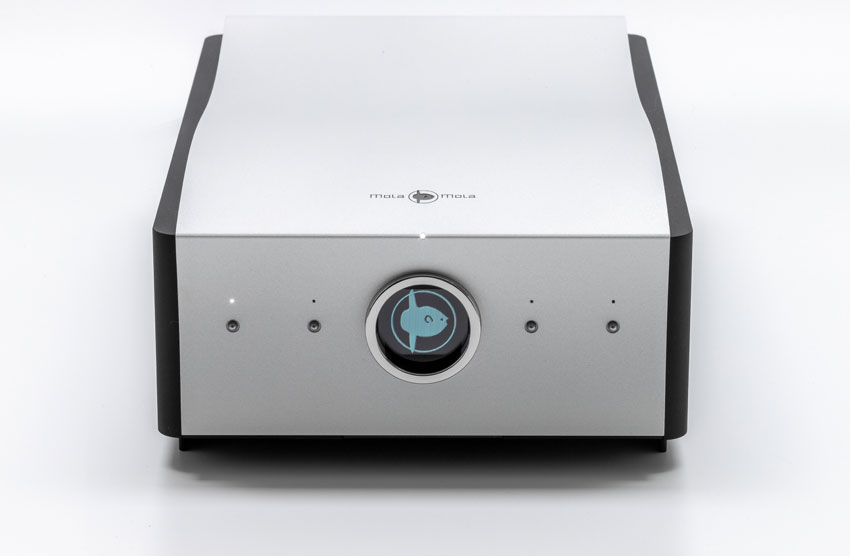
Mola Mola Tambaqui DAC
Retail: USD $13,400
US Distributor
Bill Parish, GTT Audio
356 Naughright Road
Long Valley, NJ 07853
908.850.3092
Showings by appointment ONLY; call to schedule a demonstration
Hours: Monday - Friday: 8:30AM - 6:30PM, Saturday & Sunday: No Phone Hours
All photographs and drawings as credited in this essay.




